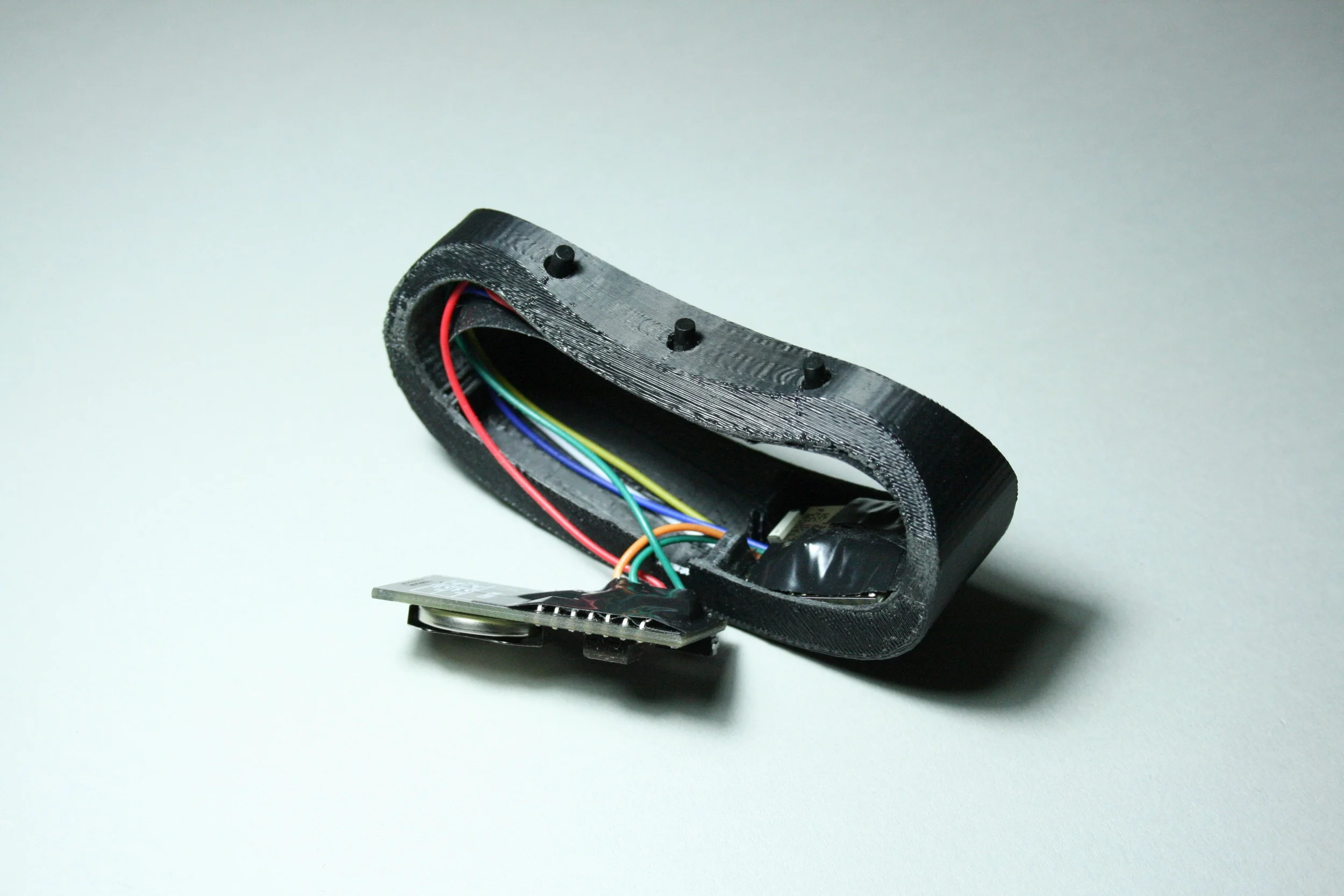
Wearable Music Remote
MSc Human Computer Interaction & Ergonomics
University College London
This project explores ergonomic and human-factor challenges in wearable technology. While many wrist-worn activity trackers exist, many fail to consider the context in which they are used, specifically during workouts. The goal was to create a functional wearable music remote that could be operated one-handed during activities like running.
The prototype was developed using Arduino and a 3D-printed shell, paired with a custom app built from open-source code.
Key Features of the Wearable Music Remote
One-Handed Operation
Designed for accessibility and ease of use during physical activities.Prototype
Built using Arduino and a 3D-printed shell, paired with a custom iOS app.User Testing
Positive initial feedback in situ, with areas identified for further improvement and ecosystem integration.
Design Challenges and Concept Development
Prior to starting the course, I submitted a project proposal outlining areas of interest, which included wearable communication or learning devices for individuals with mental disabilities, or devices focused on physical activity. In this phase, I explored various fields in more detail, expanding into tangible interfaces and physical computing concepts.
Discovering Opportunities
During initial exploration, three potential areas for wearable devices emerged: communication devices, learning devices, and physical activity devices. These concepts were developed in parallel, and after several iterations, one was chosen to be taken forward into prototyping.
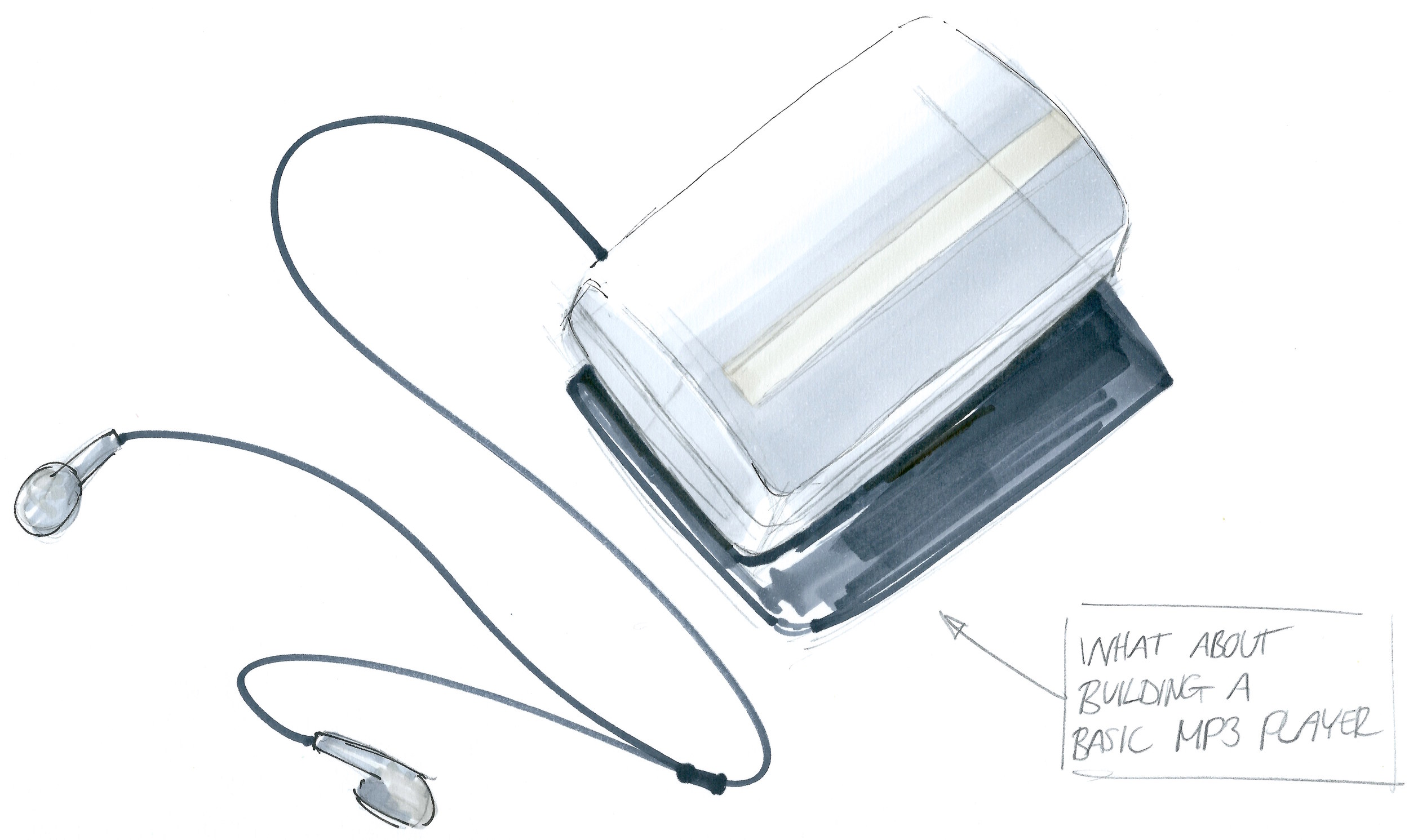



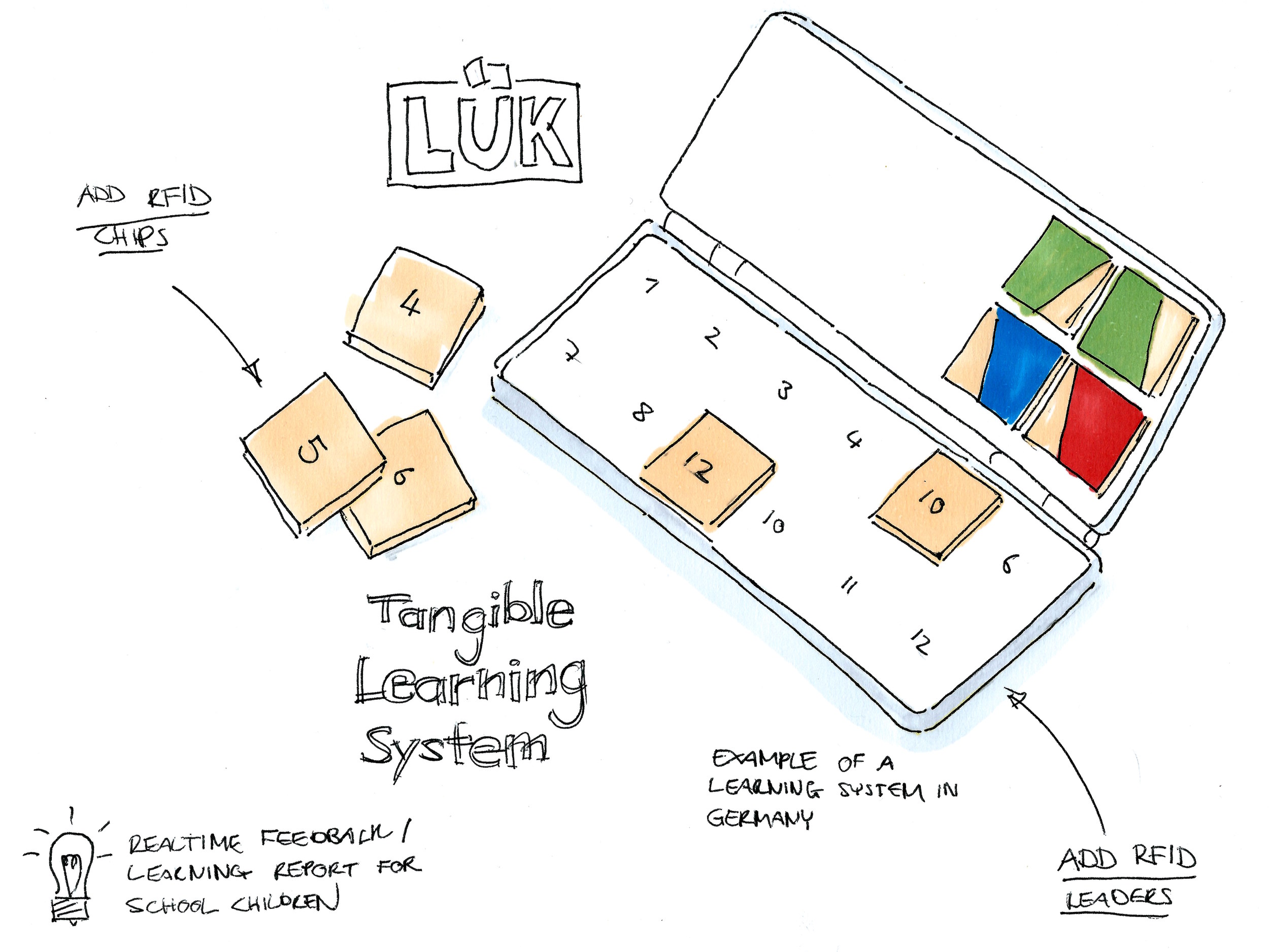
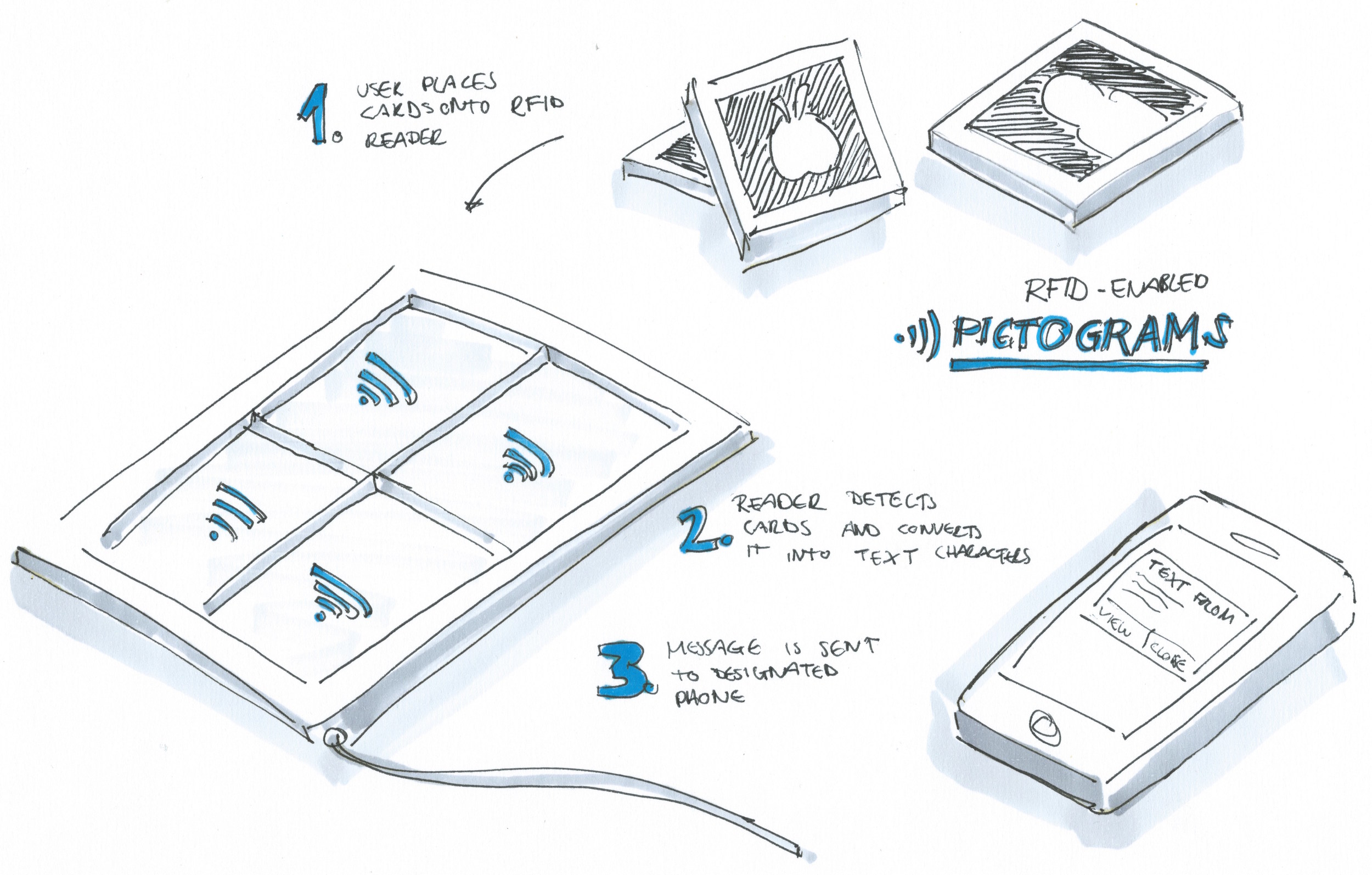
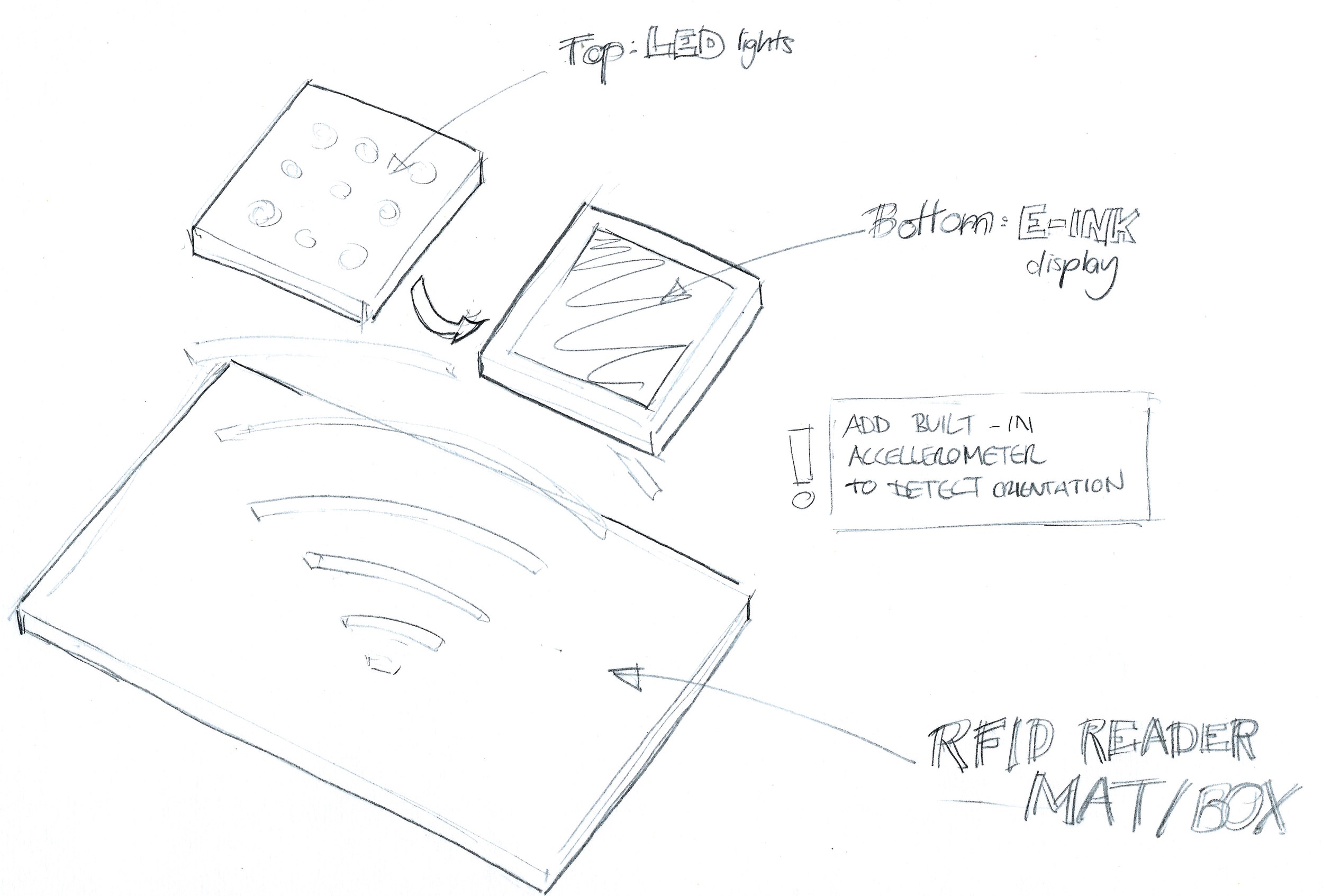
Communications Device
One concept I wanted to explore was a wearable device for individuals with speech difficulties, enabling them to communicate their needs through tactile Bluetooth or RFID-enabled objects (or “pictograms”) that trigger messages or notifications.
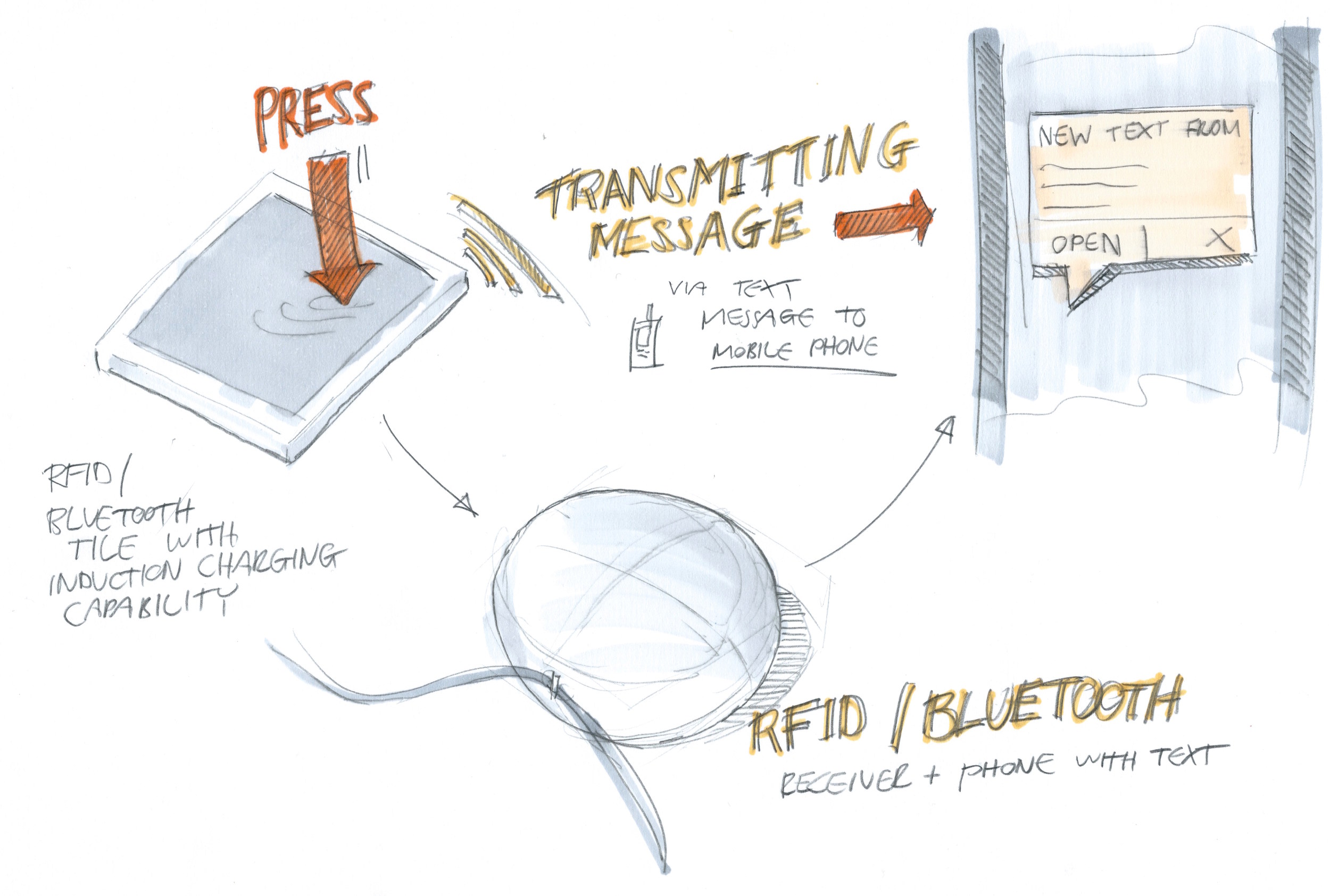
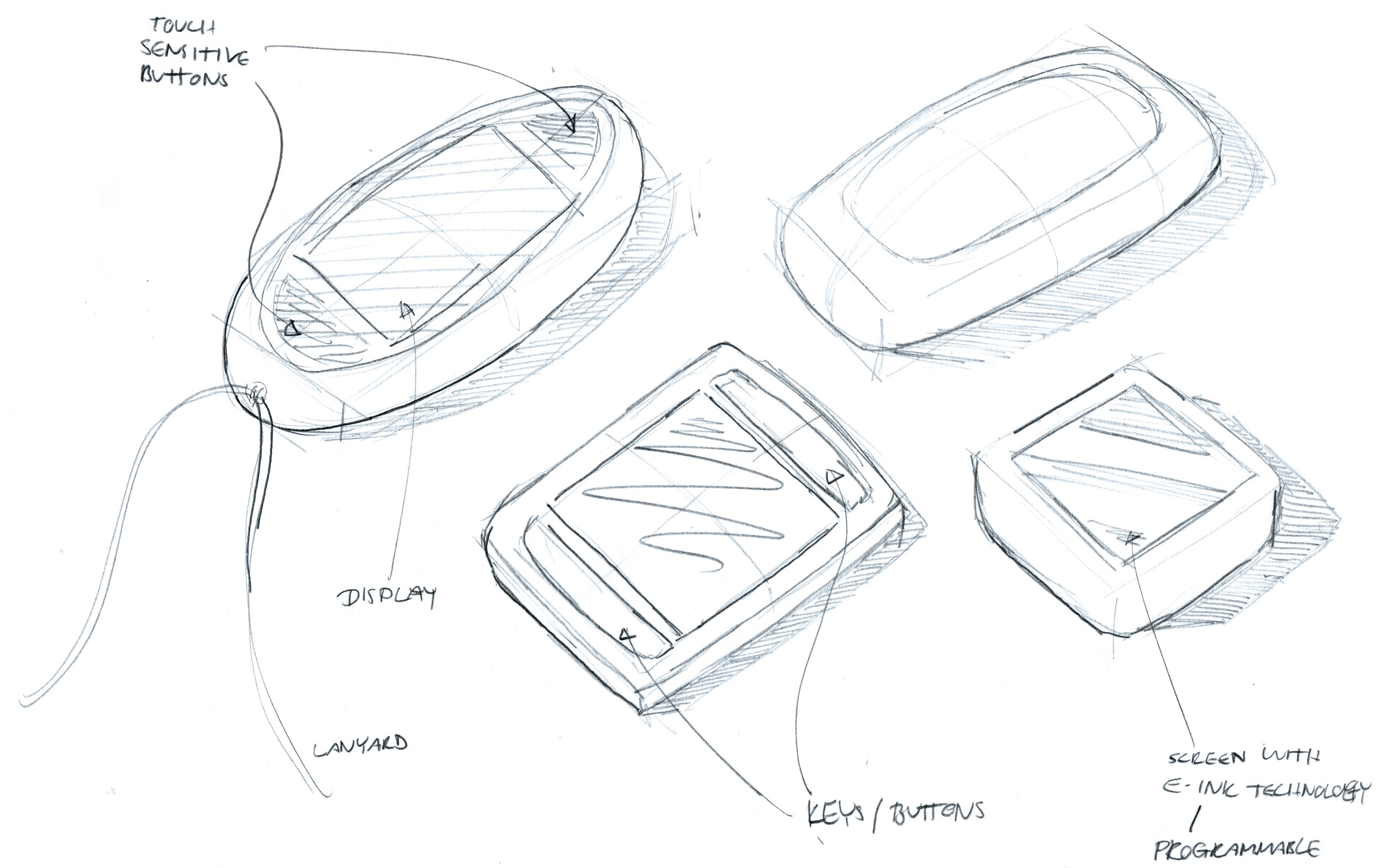

Learning Device
Building on the communication concept, this idea aimed to use objects for teaching children about colours, shapes, or vocabulary. Connected, tangible objects would also provide analytical data on the learner’s progress.
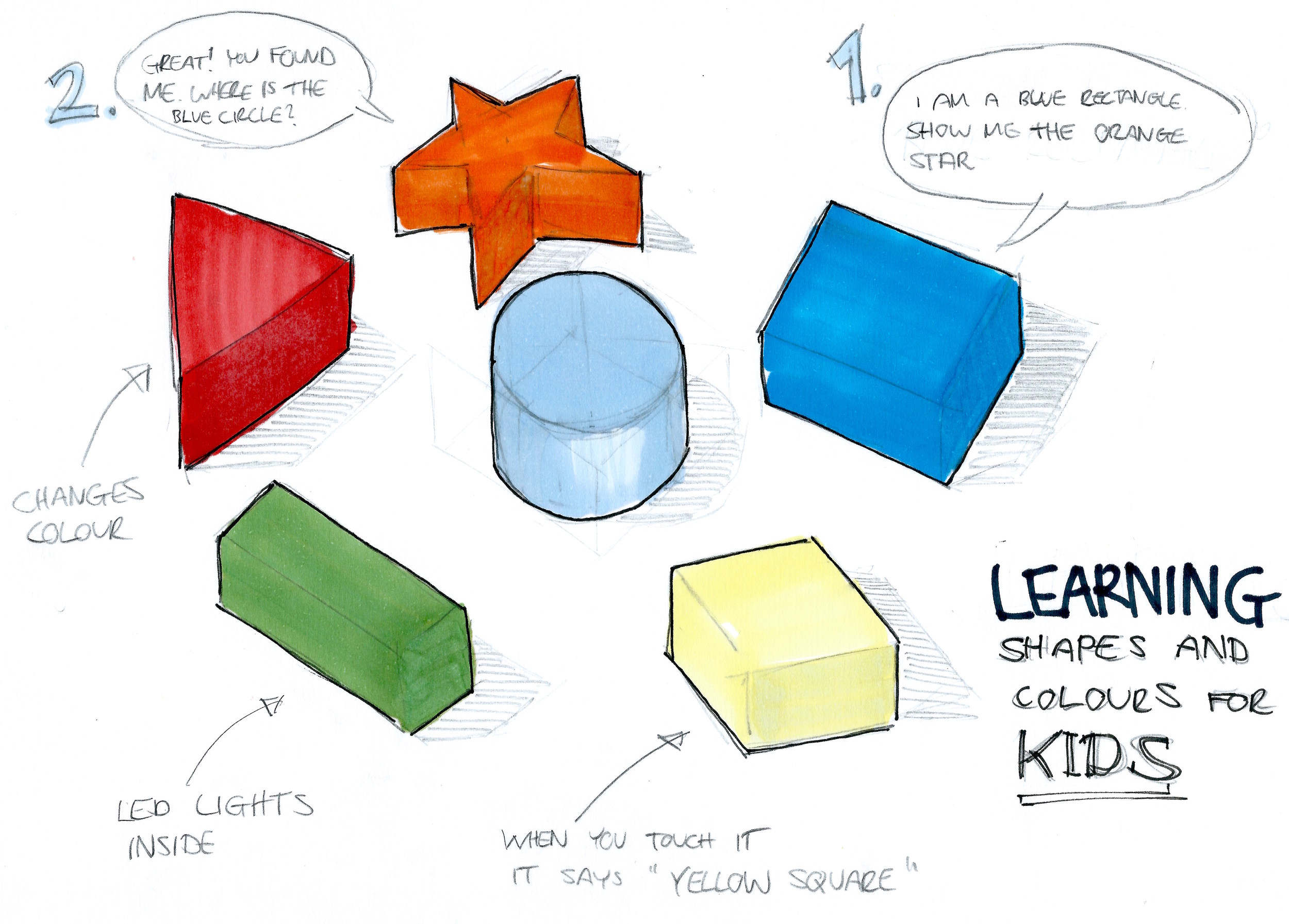
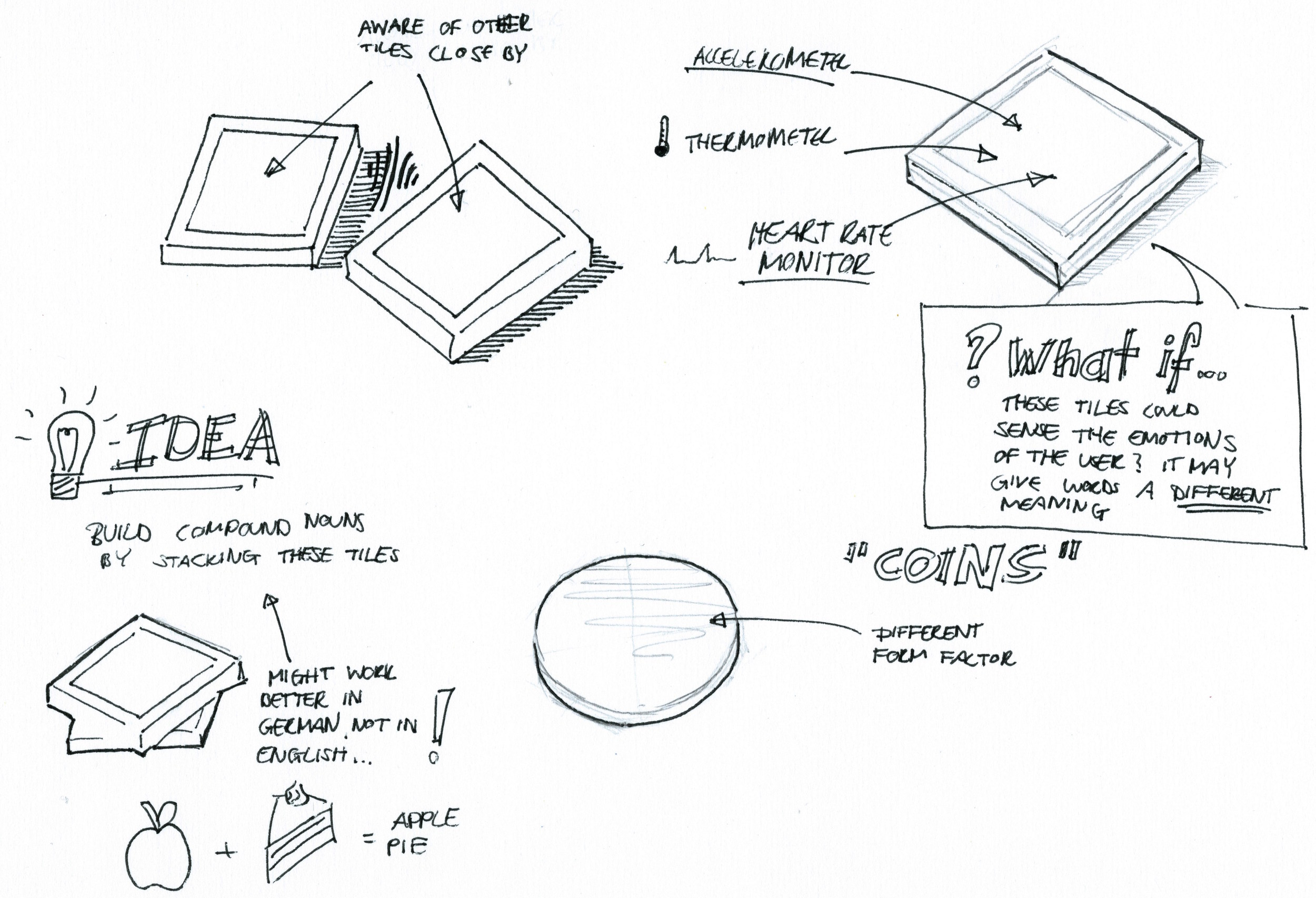
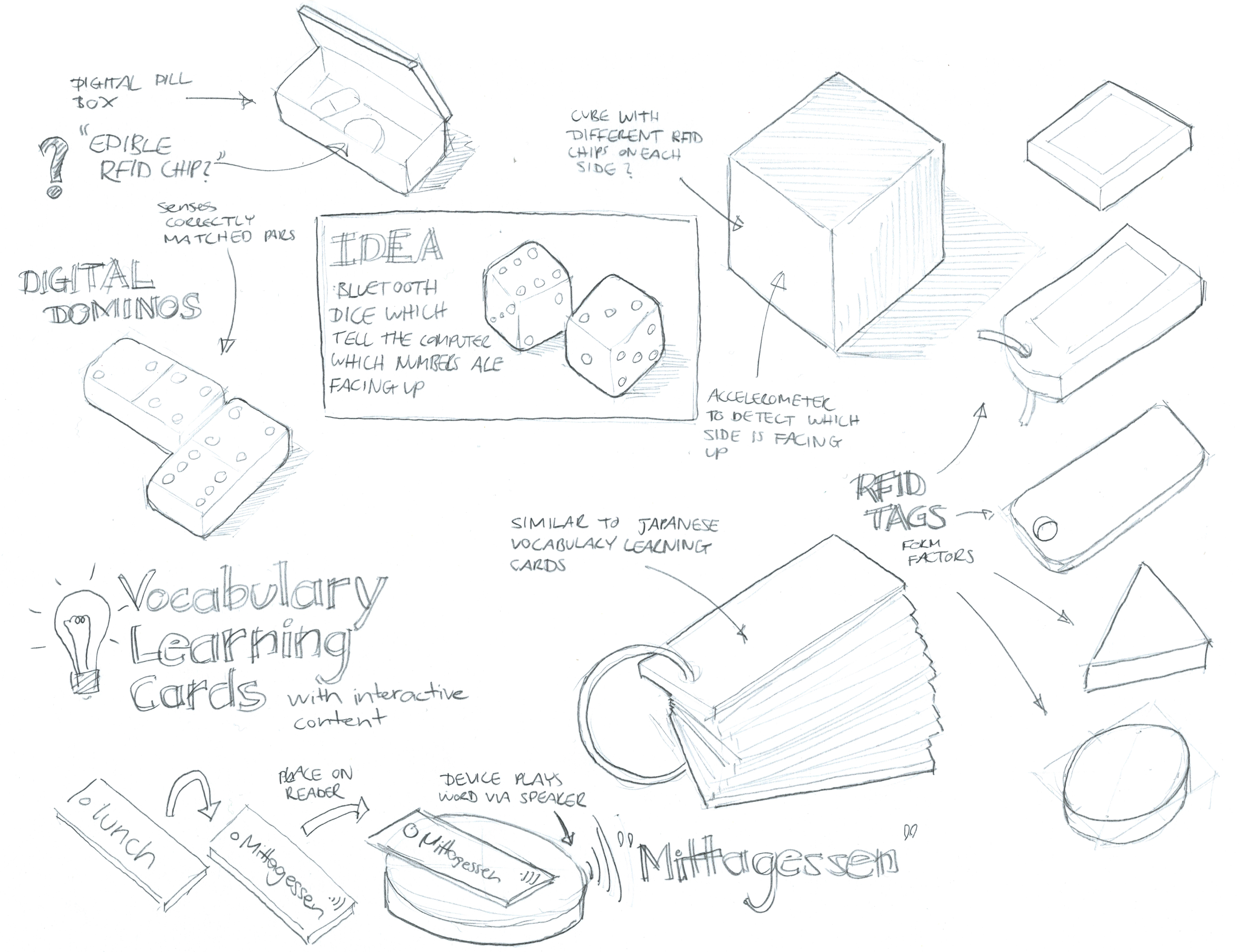
Wearable or connected home
The miniaturisation of physical computing components opened up new possibilities for integration into wearable products. This project delved into the personal computing space, exploring how devices could become part of users’ everyday lives.
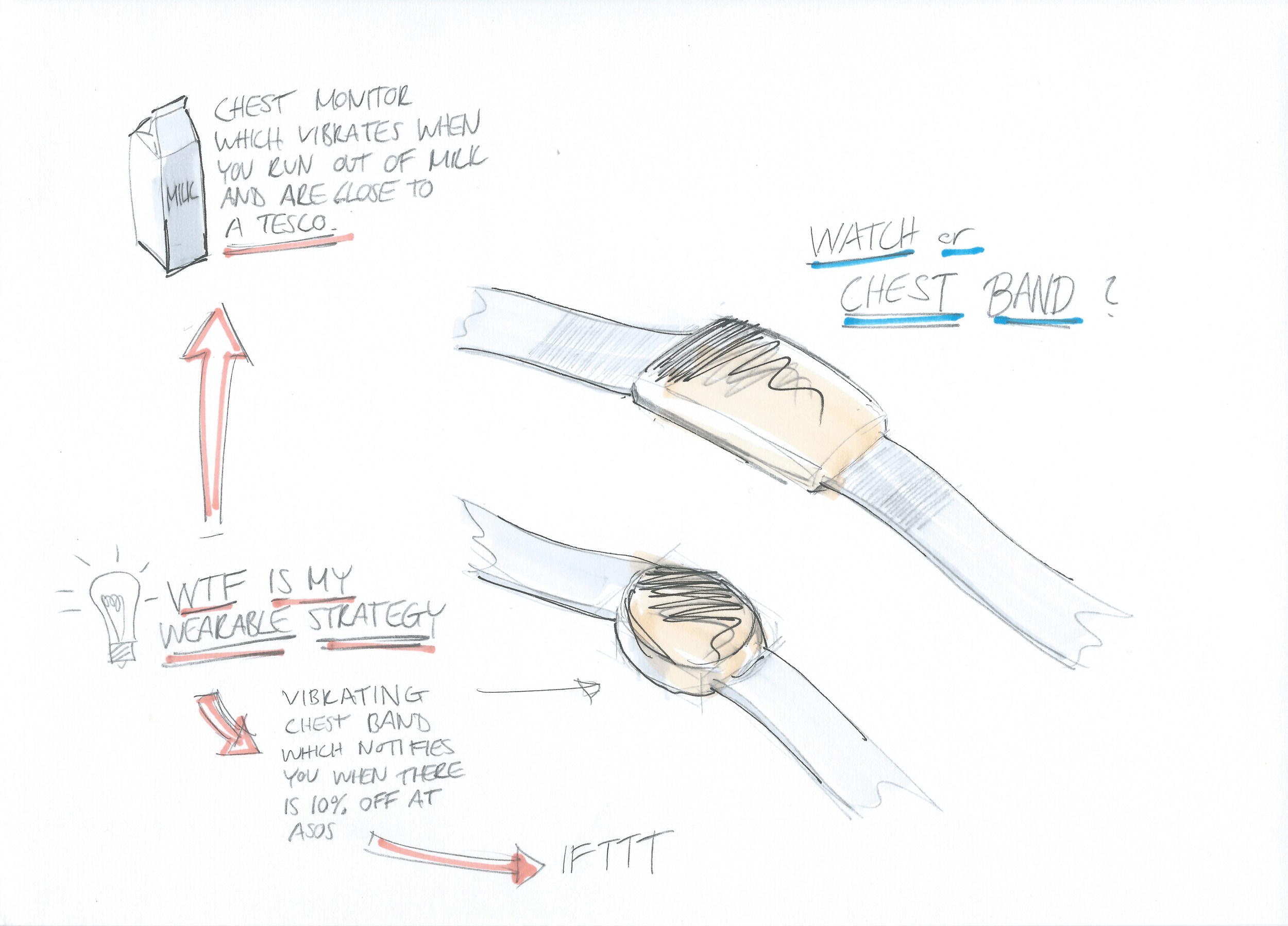
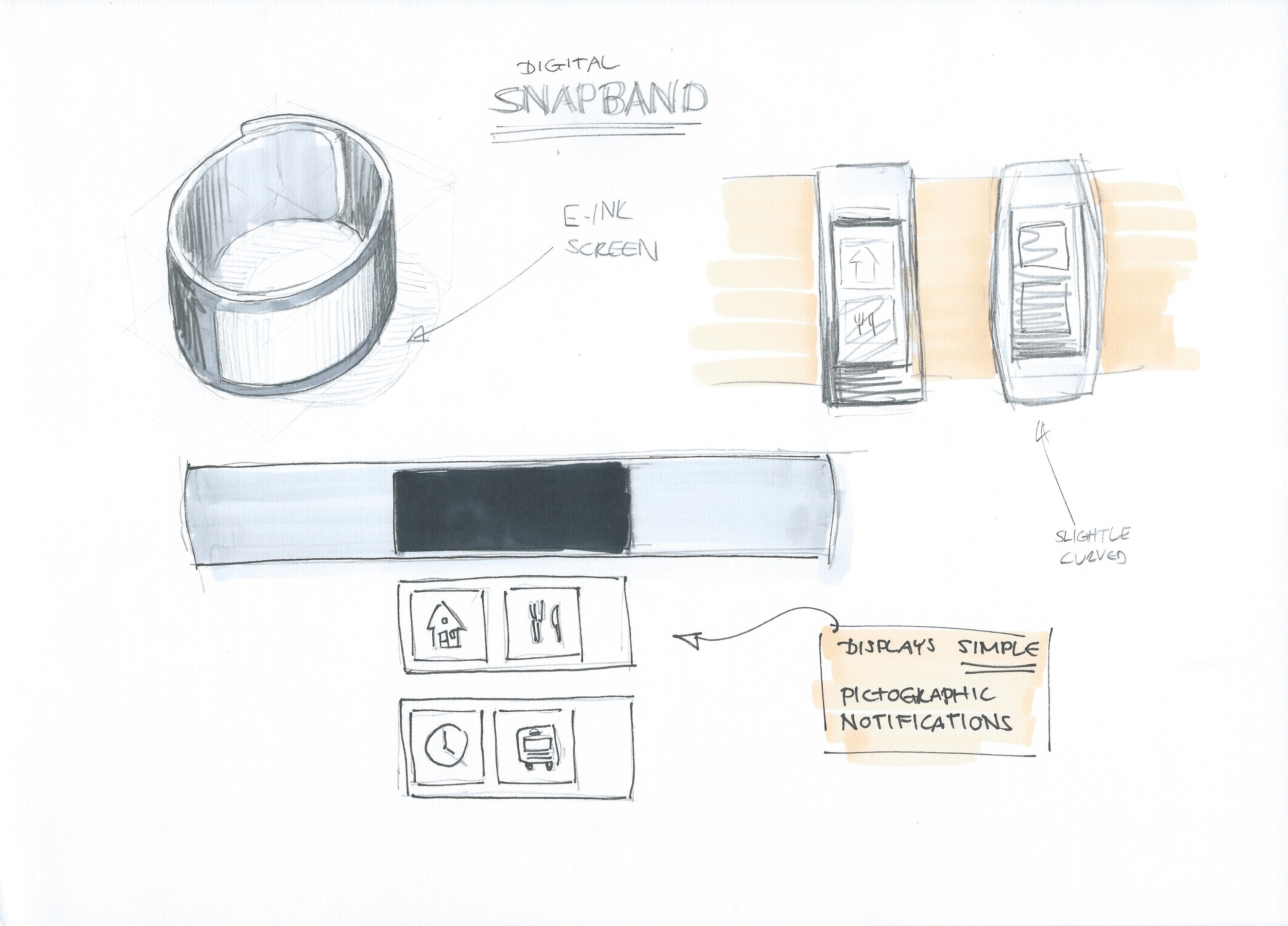
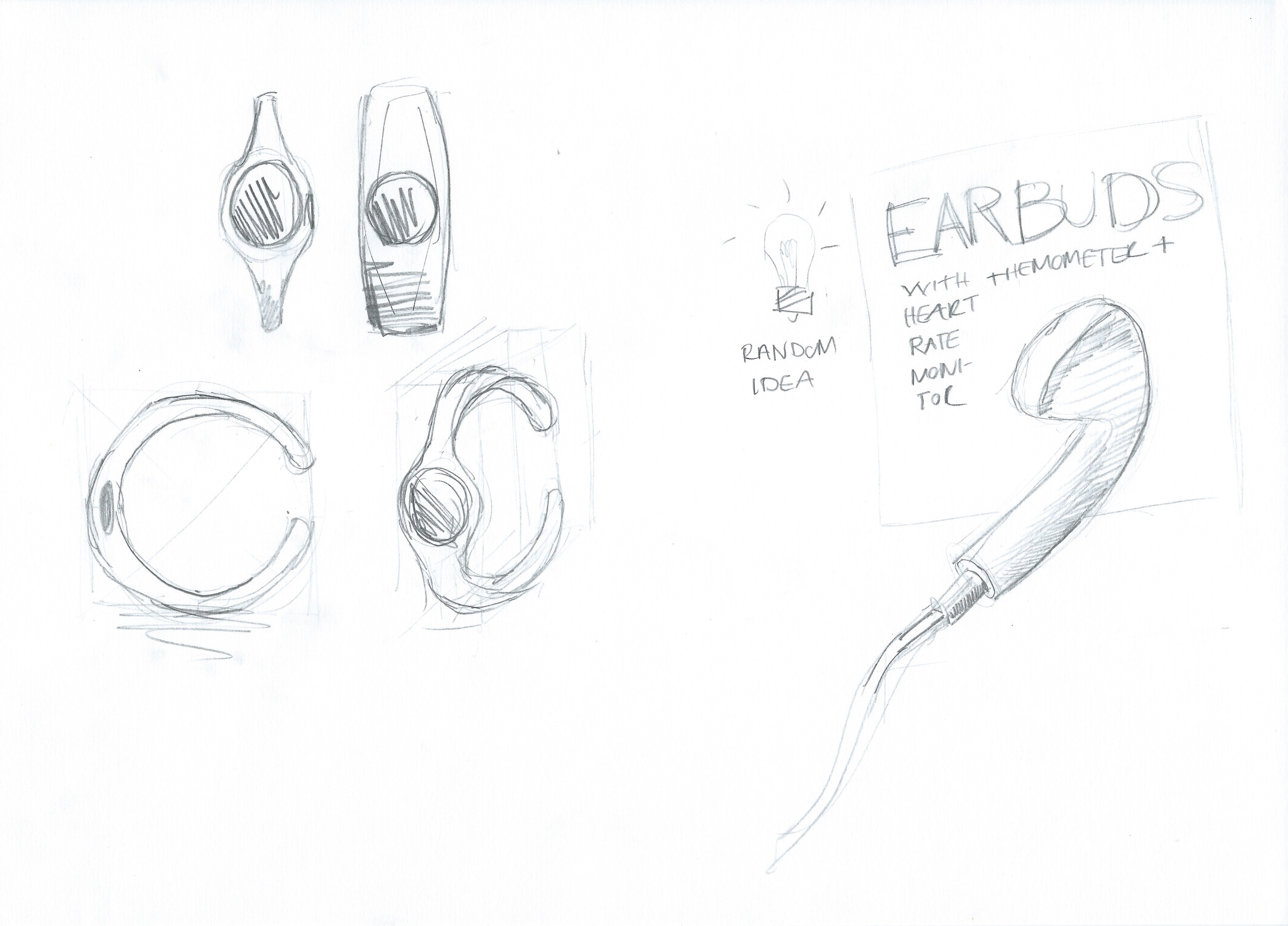
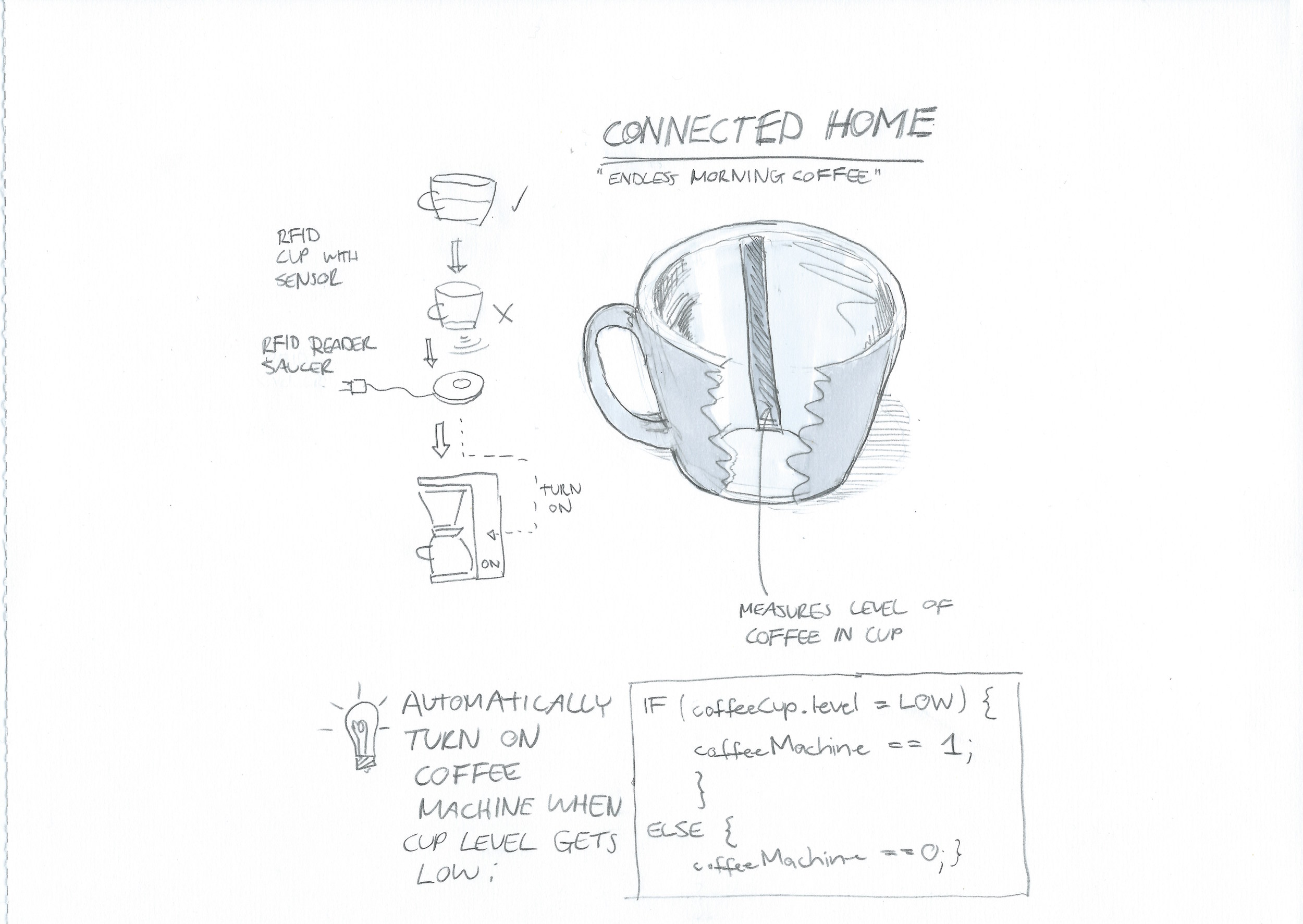
Concept Development
As ideas evolved, the focus narrowed to a wearable device that addressed the unique needs of users during physical activity. This decision prioritised practicality and accessibility in dynamic, real-world scenarios. The refined brief centred on creating a wearable music remote optimised for workouts. This solution aimed to solve key pain points: enabling one-handed operation, ensuring usability with minimal disruption to movement, and addressing wrist accessibility issues in sportswear.
Inspiration
Drawing inspiration from unconventional designs like the Alexander McQueen Knuckle Clutch, the concept explored alternative ways to attach devices to the body. This approach blended ergonomic functionality with a focus on aesthetic appeal. I explored multiple wearable products, starting with the placement of the human body to designs and functionality. Inspiration was taken from the Alexander McQueen Knuckle Clutch with its unconventional handle. Both conventional and unconventional ways to attach a product to the human body were explored as shown below.
Outcome
The initial phase concluded with a clear direction: a music remote for physical activity, tailored to address specific user needs and tested for practicality and comfort.
Looking at the design and aesthetics of the device was also touched on during this project as there have been many attempts by designers, and even users, to personalise personal monitoring devices.
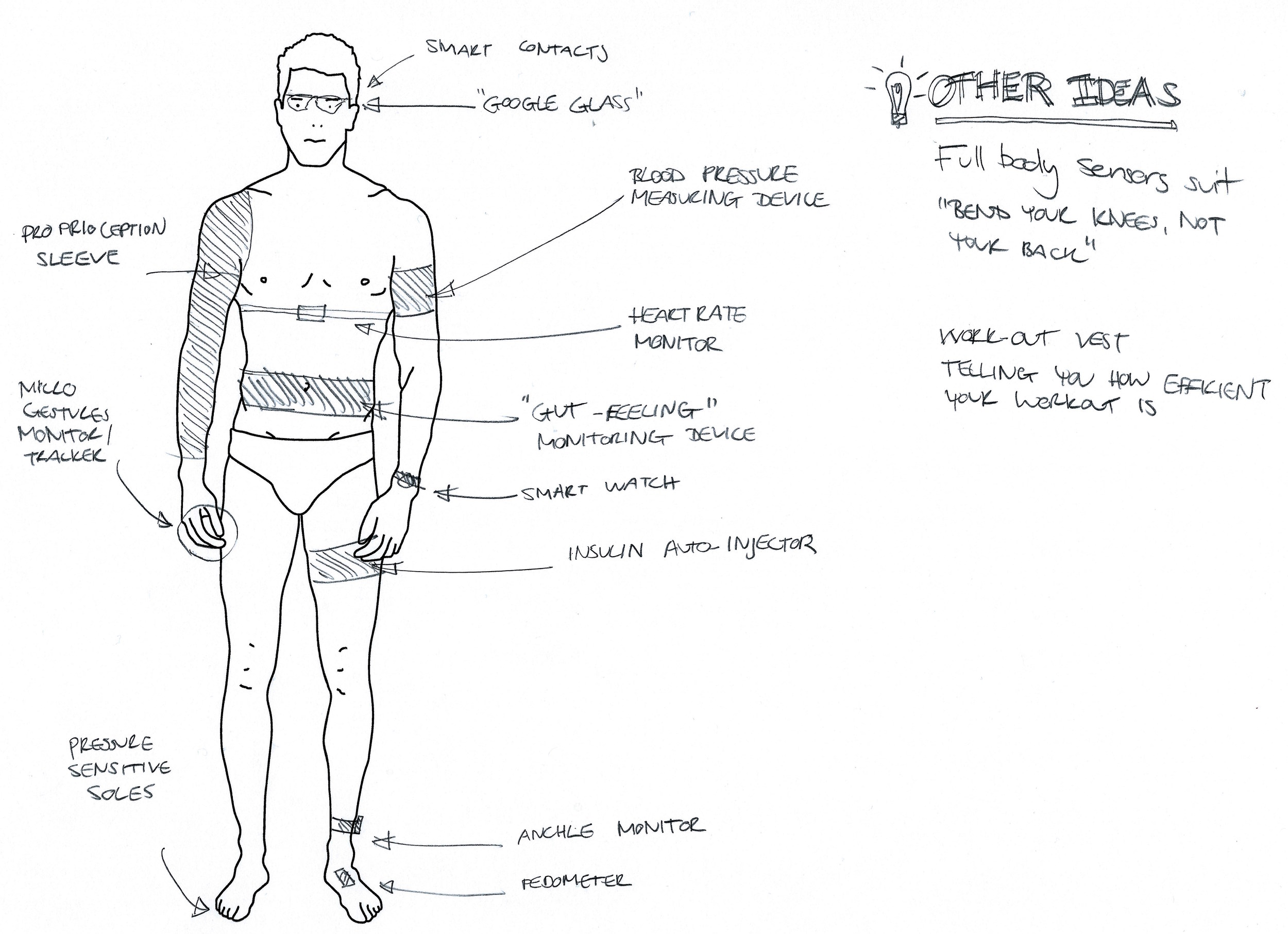
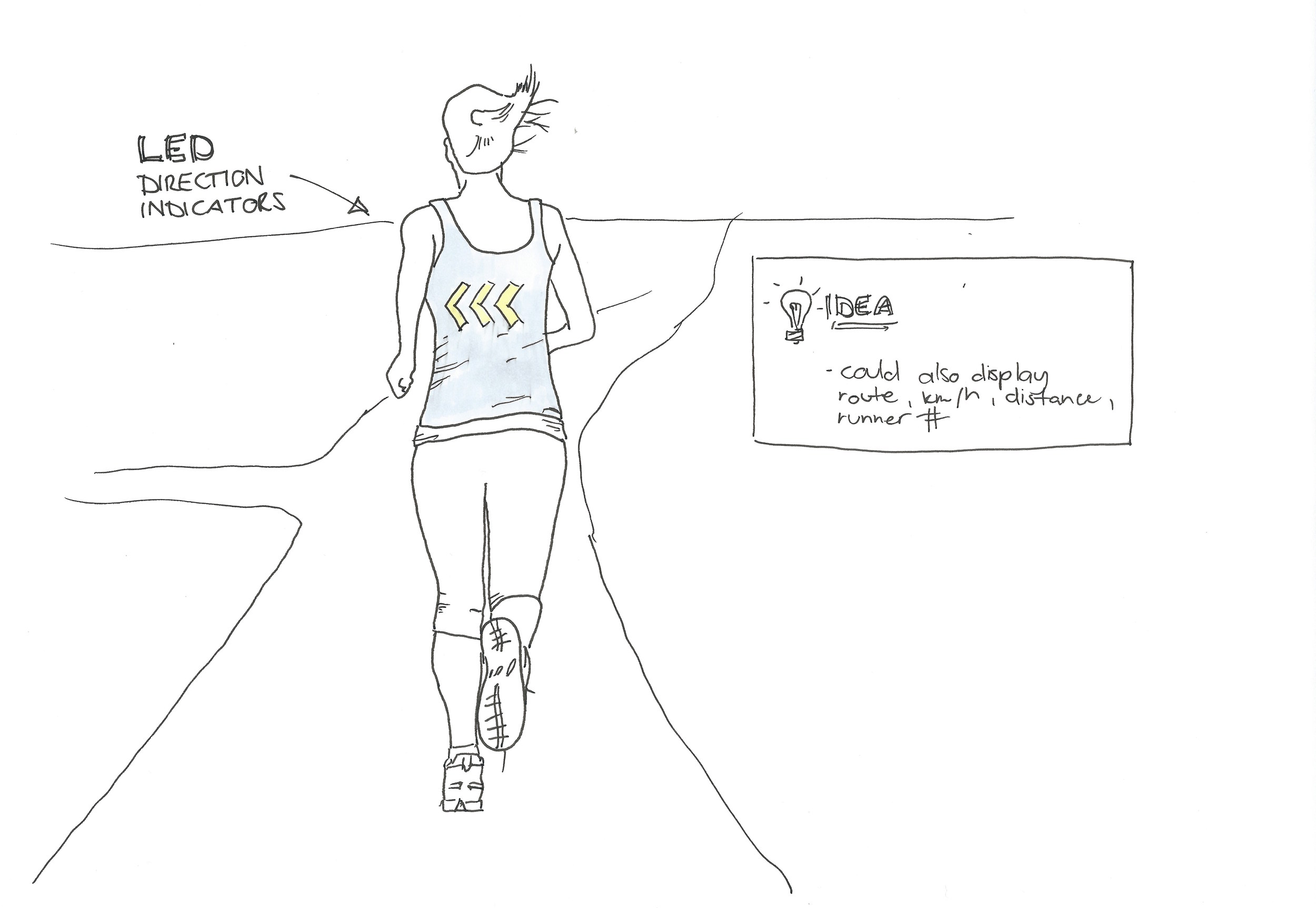
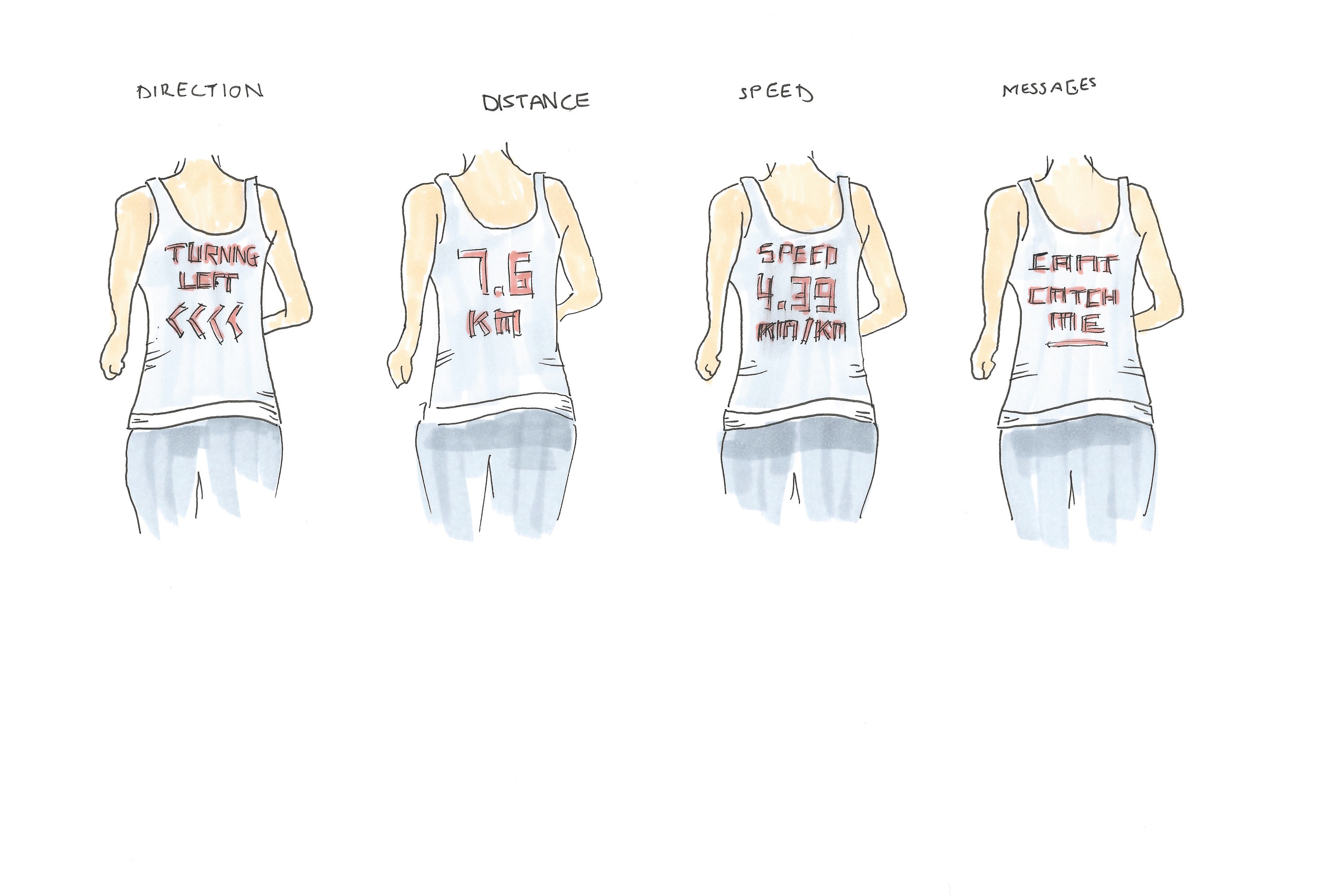
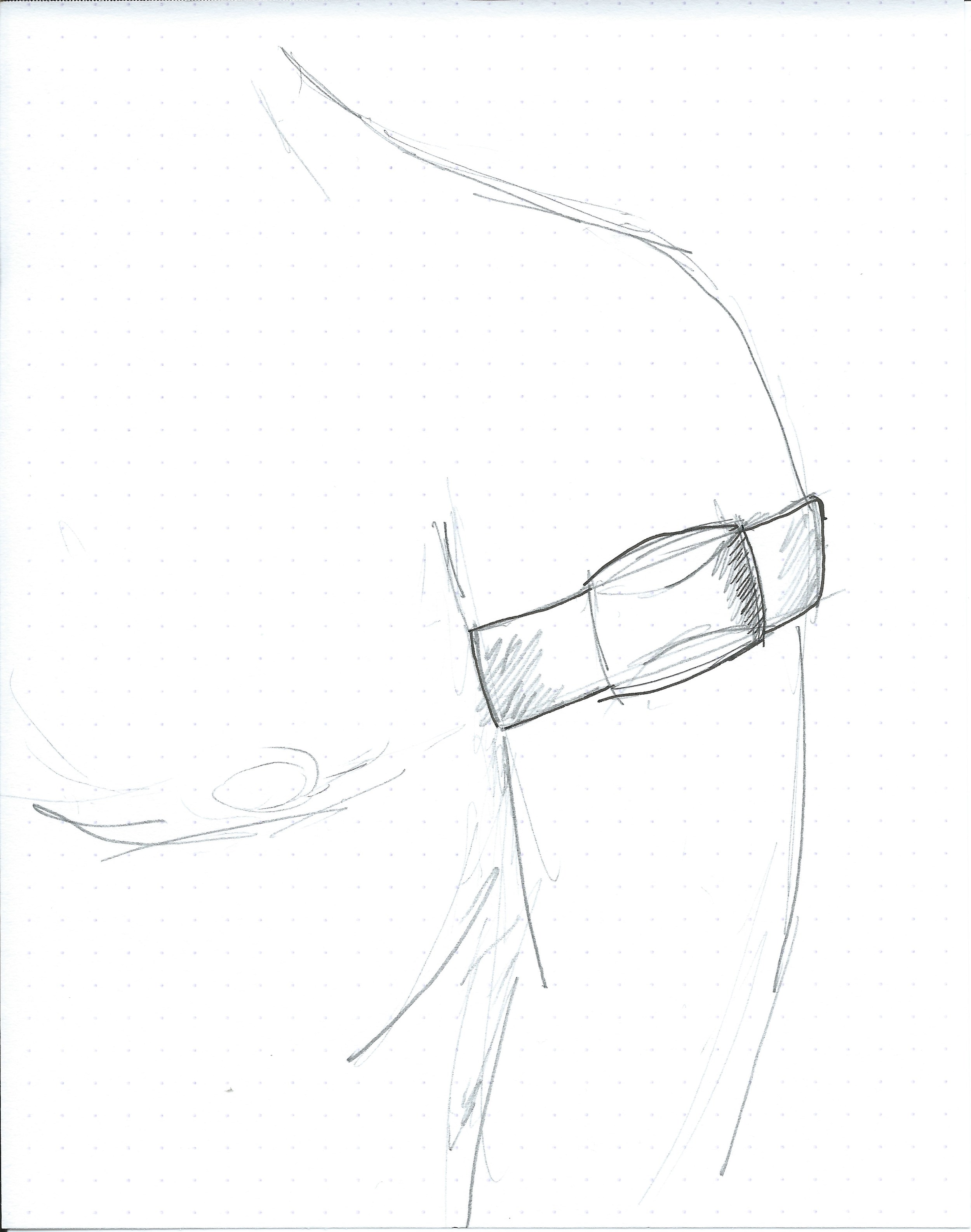
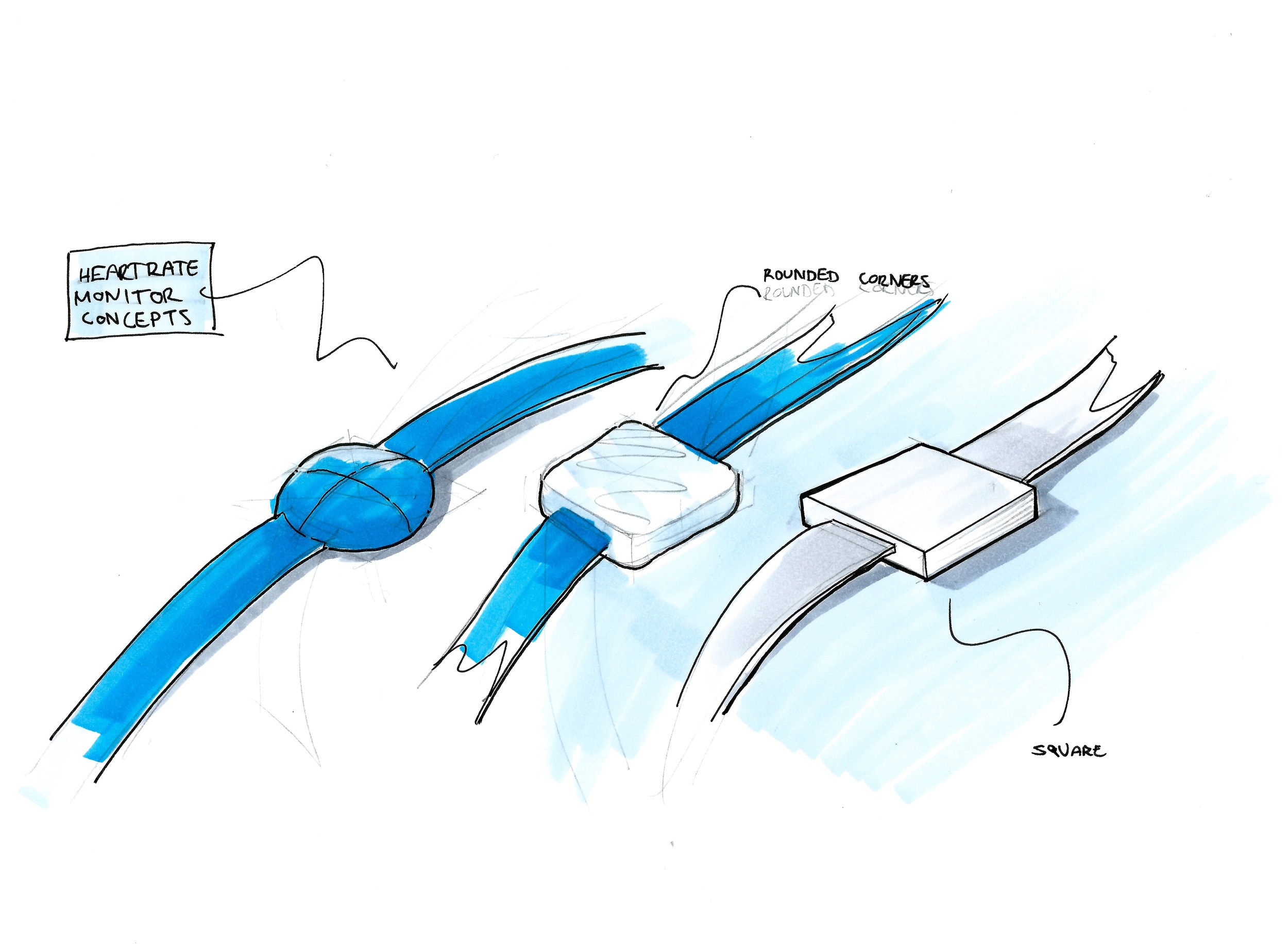
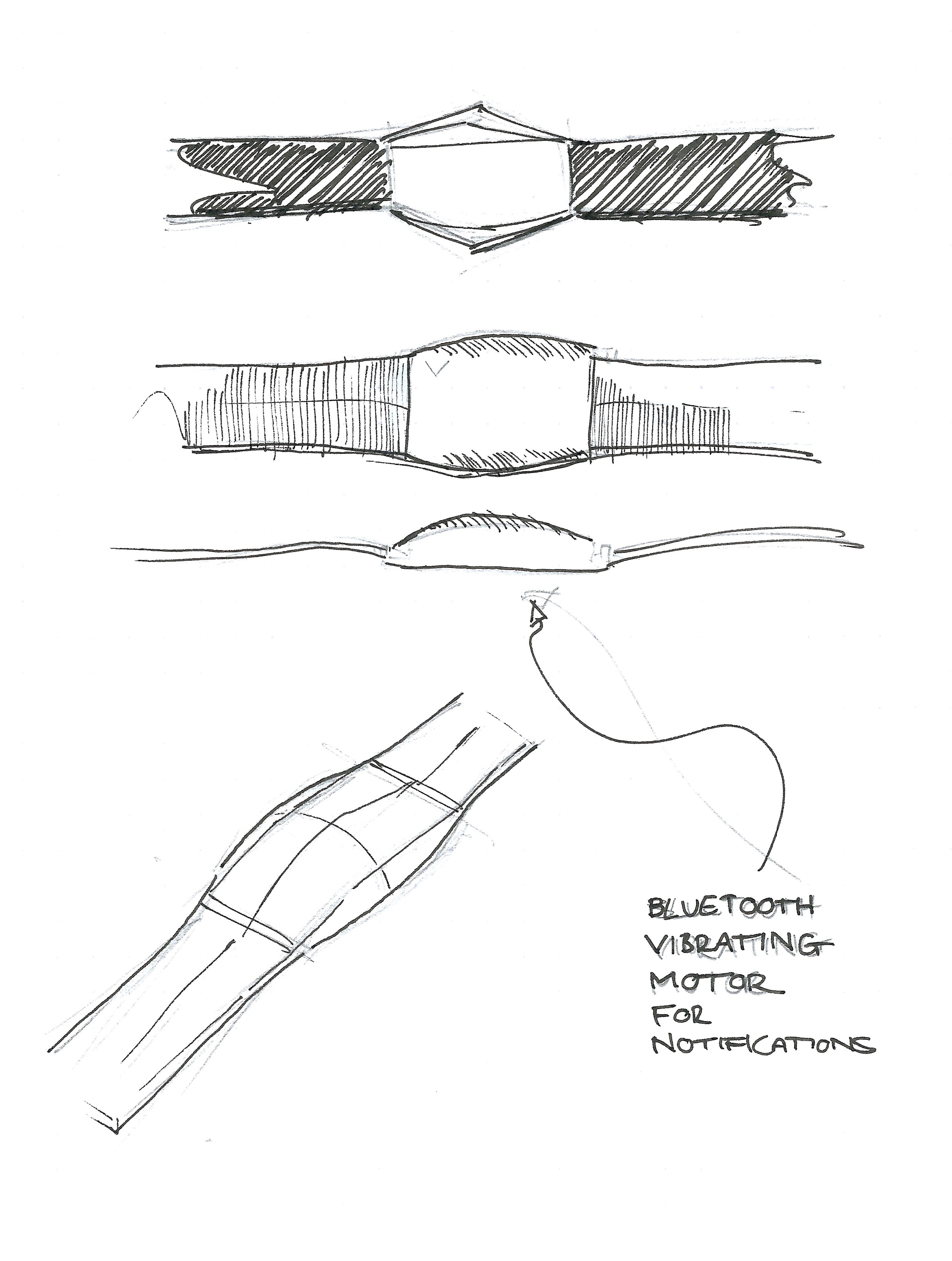
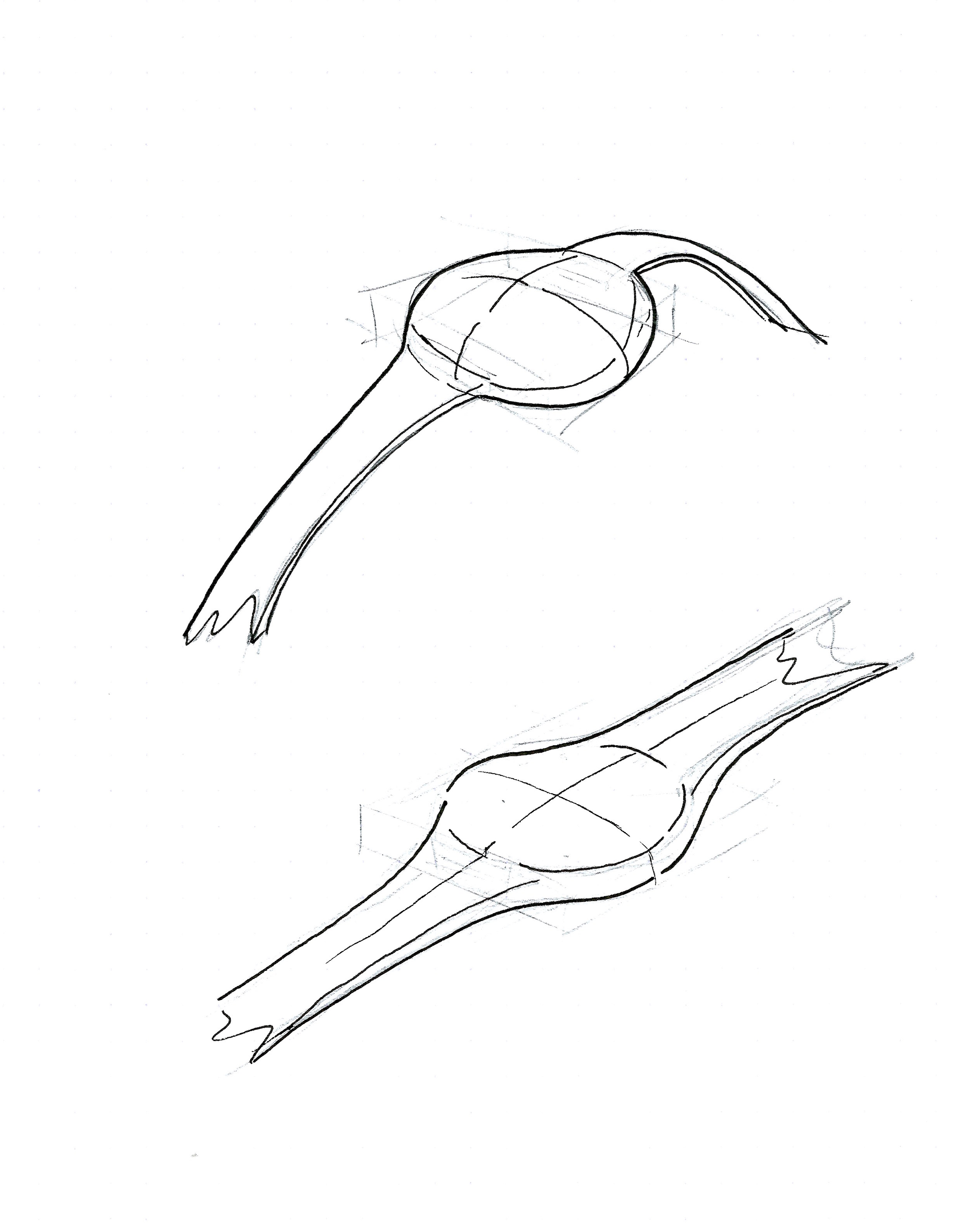
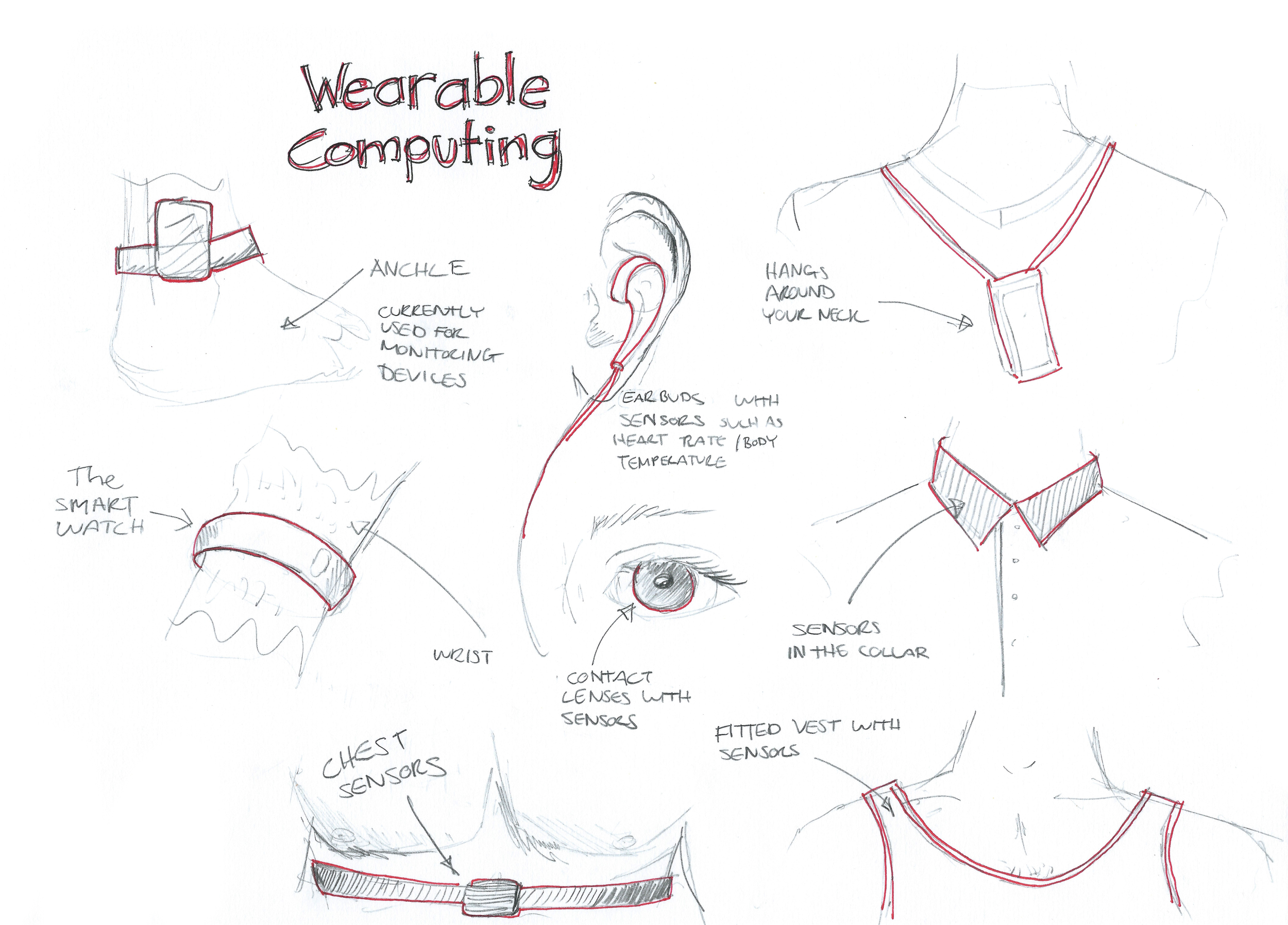
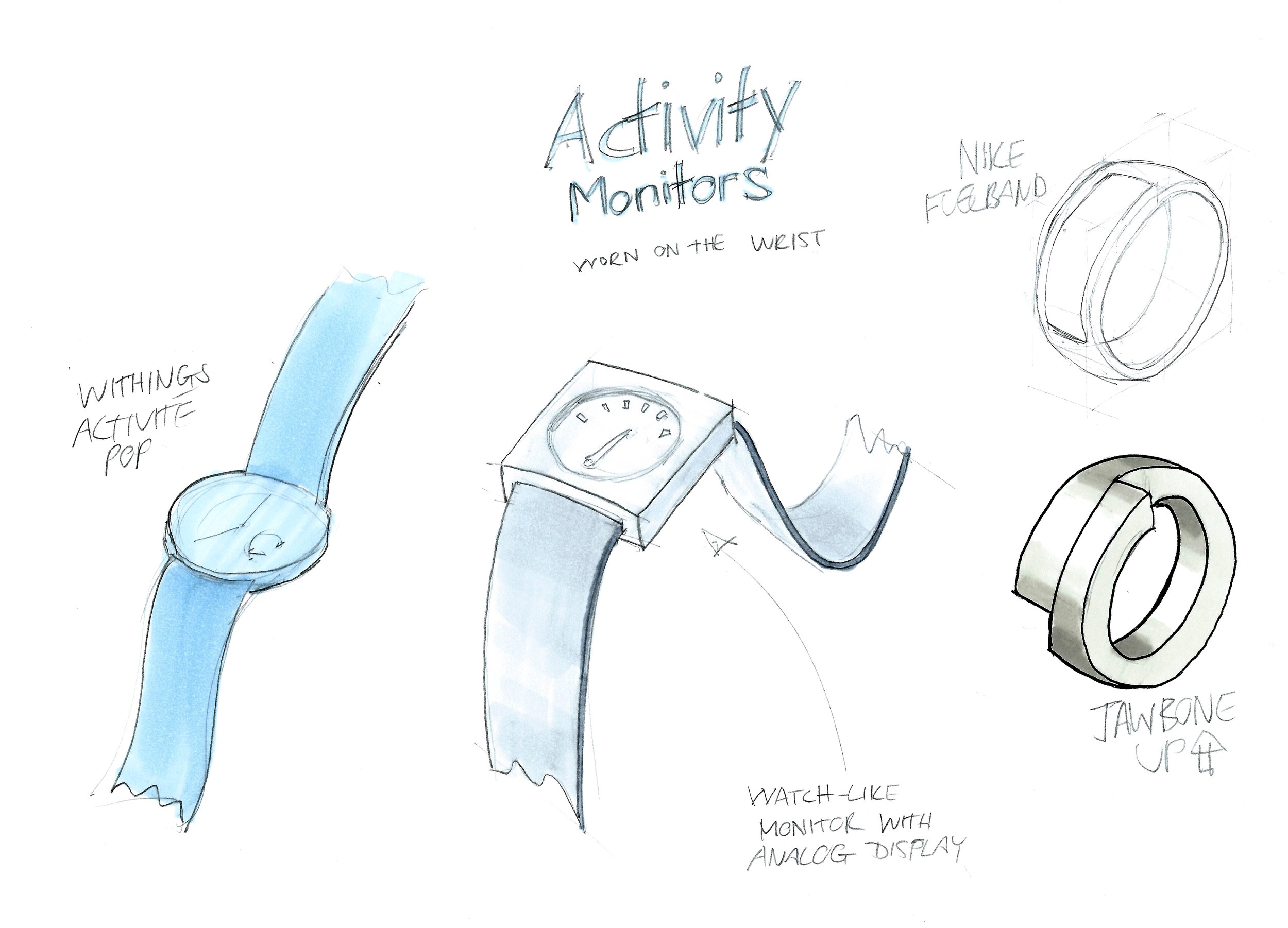
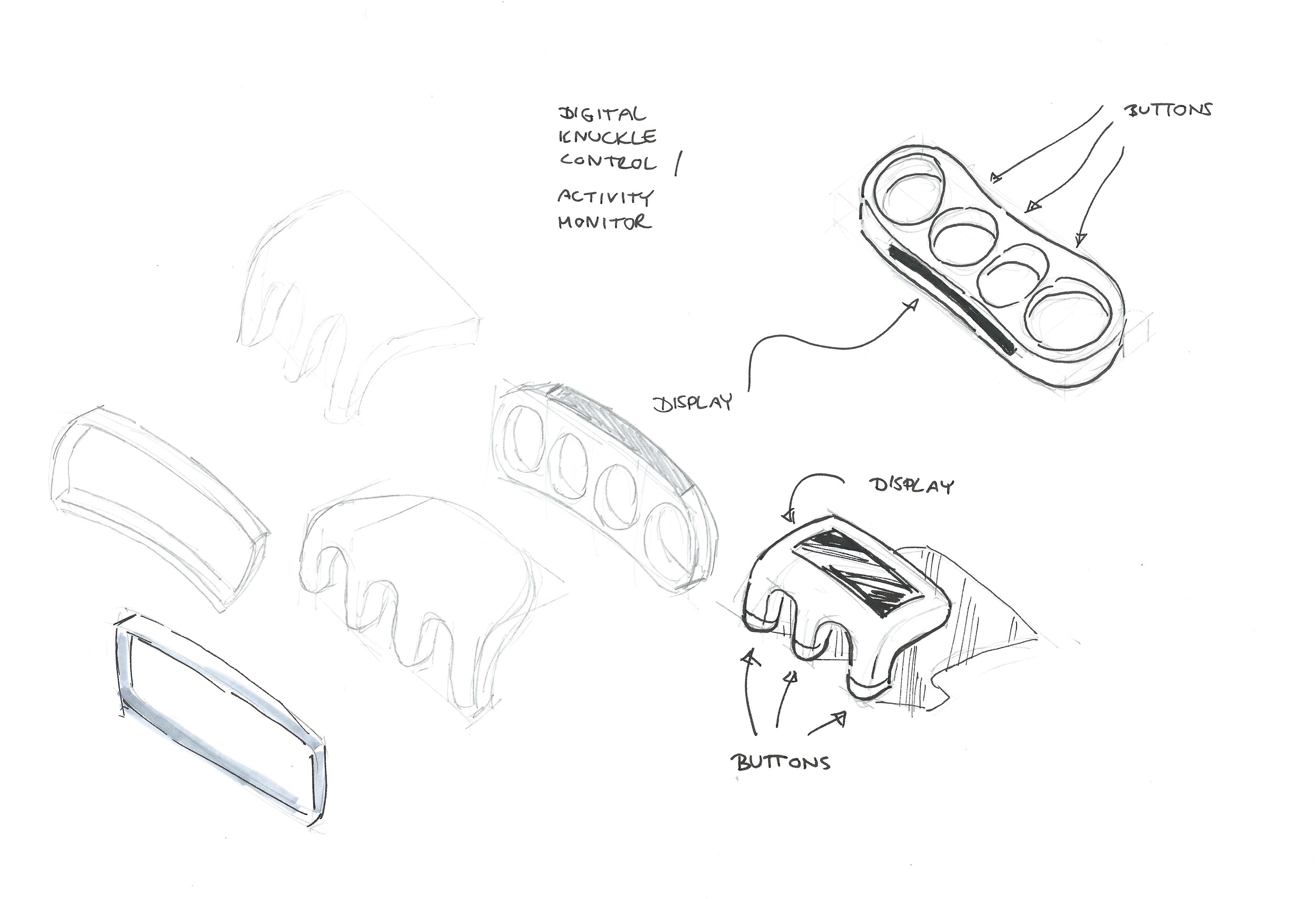
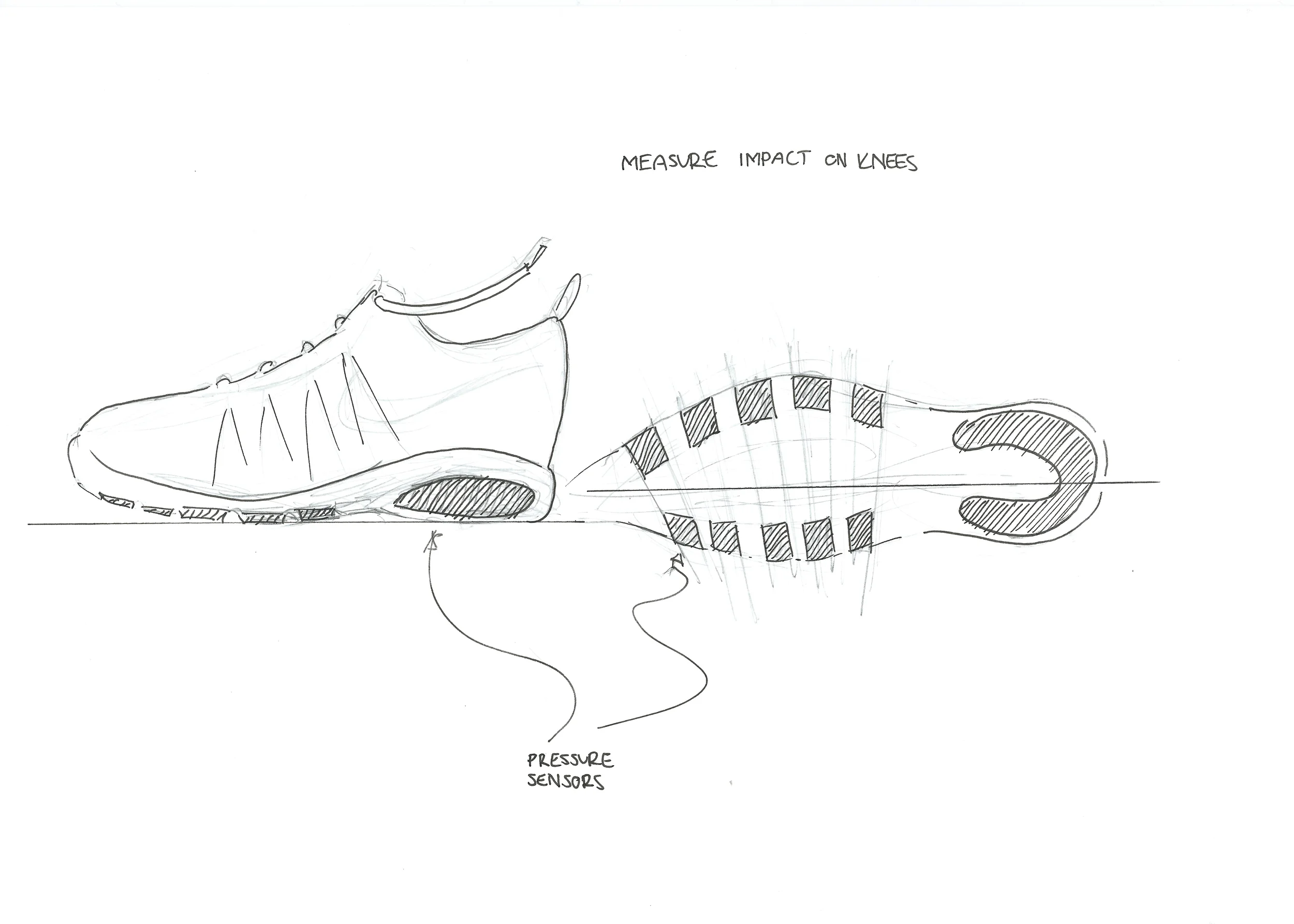
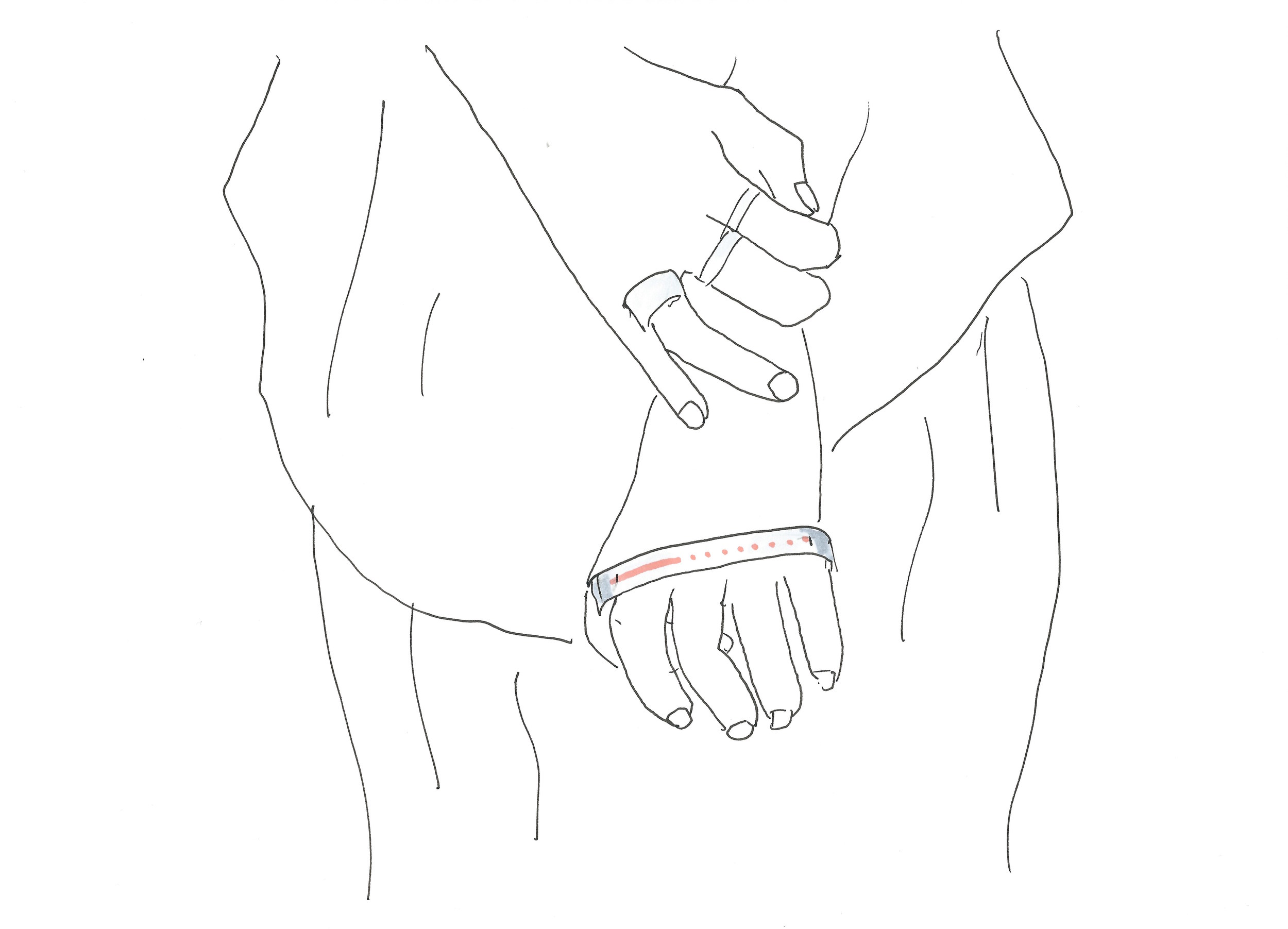
To aid the concept development phase I used polymorph to rapidly build mockups of the design in order to test and explore the concept in more detail.
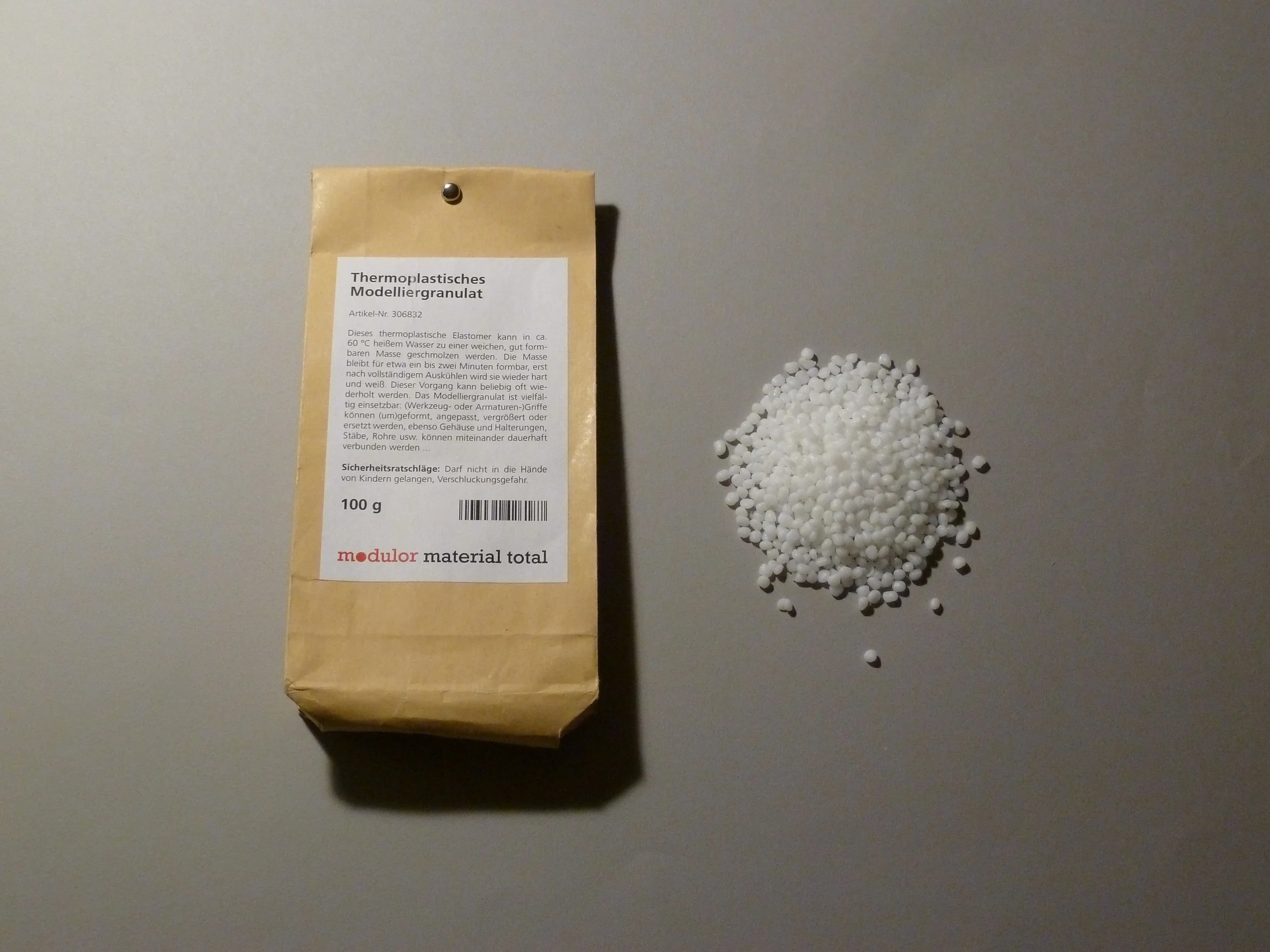


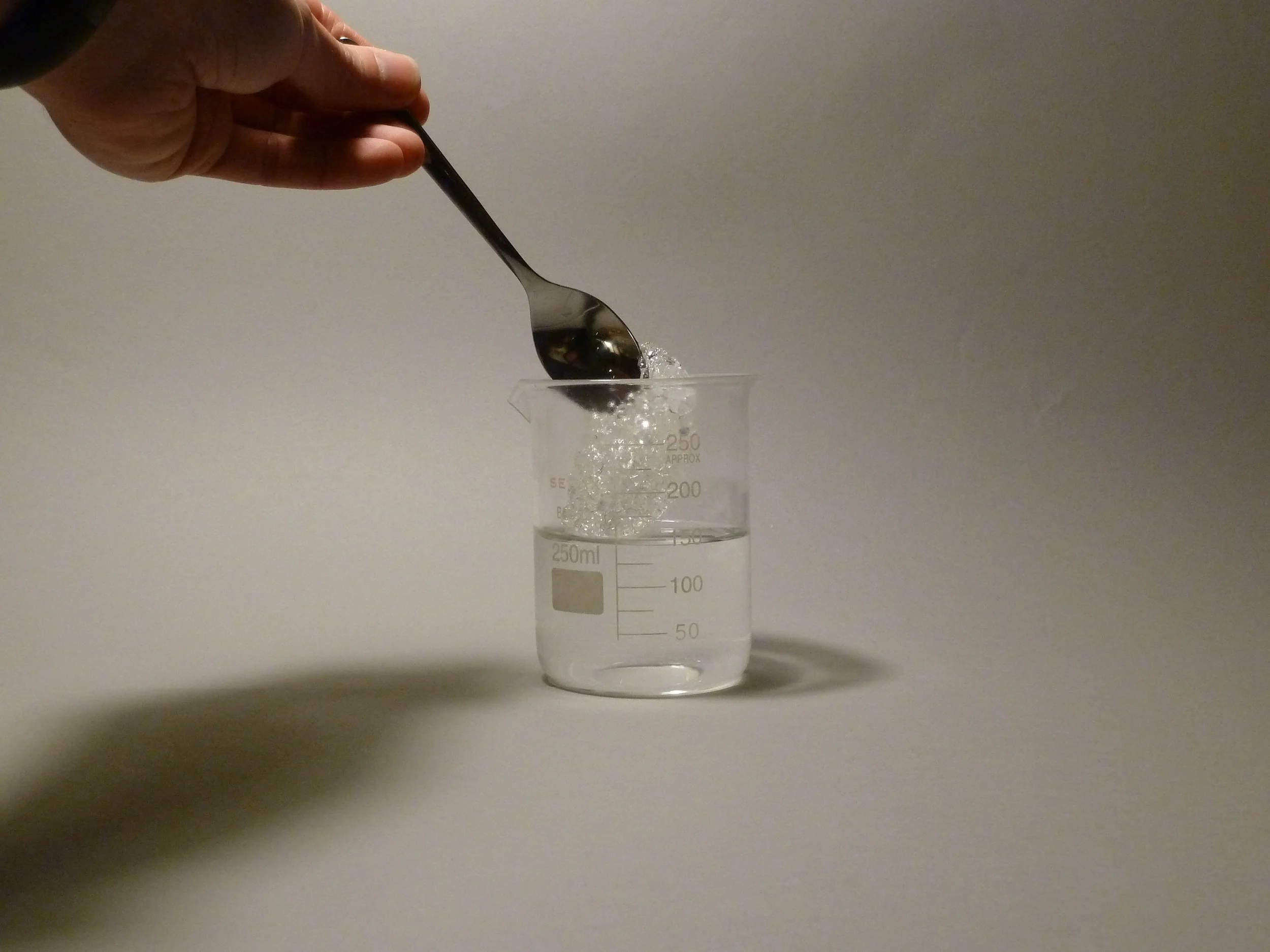






Design challenges with wrist-worn trackers or smart watches
Whilst watches and other smart wrist bands are currently being explored by many companies, these products require attaching to the arm and to be operated by the opposing hand, making it a two-handed interaction. During physical activity, such as running, this may not necessarily be possible. Additionally, much sports attire has been designed to cover the user’s wrists, making them inaccessible. Designing something which covers just the fingers and is accessible by the user’s thumb allows for a one-handed interaction.






Key priorities
Single-handed Use
Ensuring the device could be operated without requiring both hands, making it more practical during movement.Accessibility
Designing a device that avoids the limitations of wrist-worn trackers, particularly in sportswear.Integration
Exploring how the device could work seamlessly within users’ existing routines and ecosystems.
Blue foam and paper modelling
Starting with basic paper models, the shape of the product went through many states of interaction. Initially the designs focused on the form factor and user comfort. Throughout the process the model was designed to consider its internal components. This was prototyped with both foam core and blue foam. The blue foam models were tested and refined until a satisfactory shape was found which was converted into a British Standards (BS8888:2013) engineering drawing.
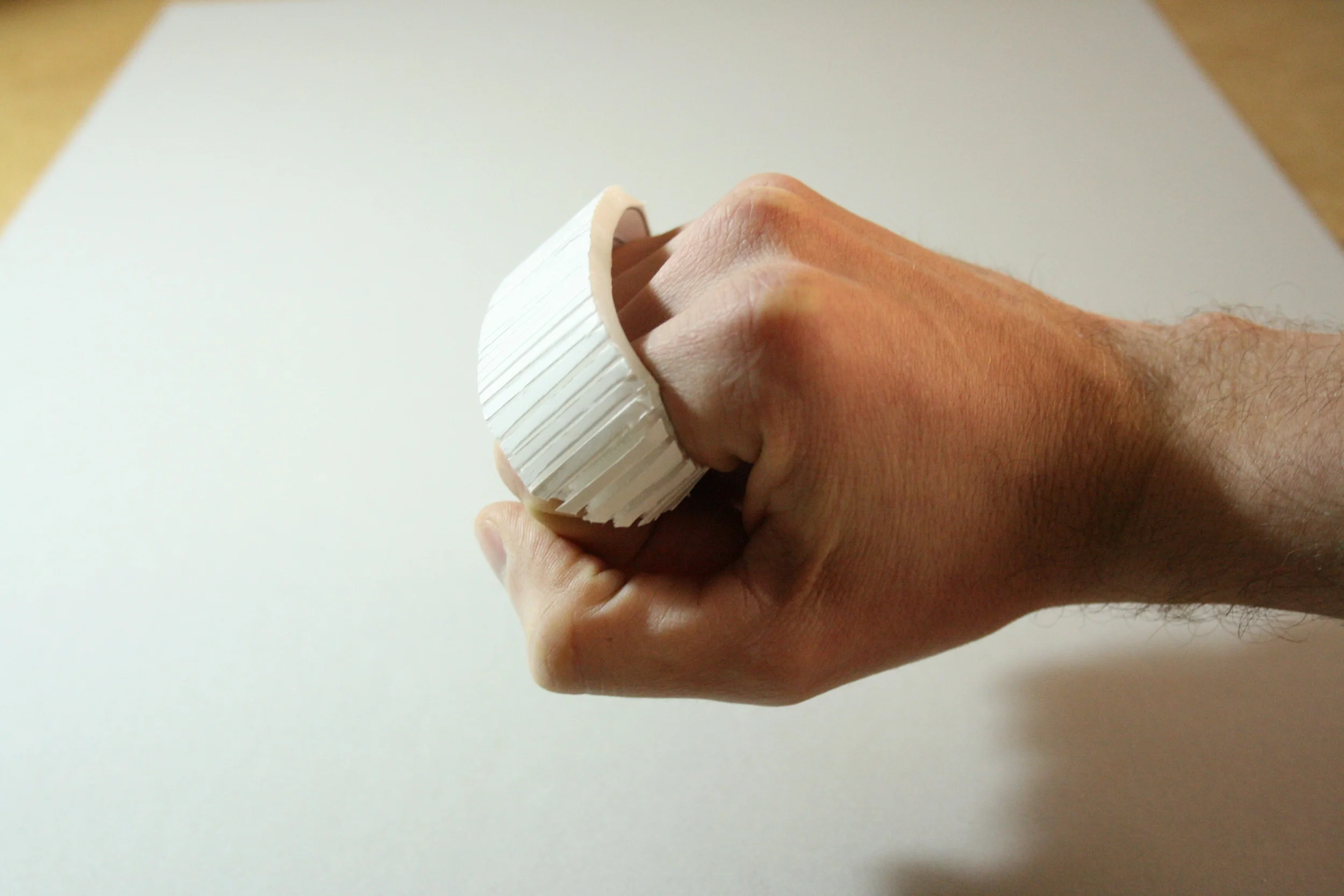


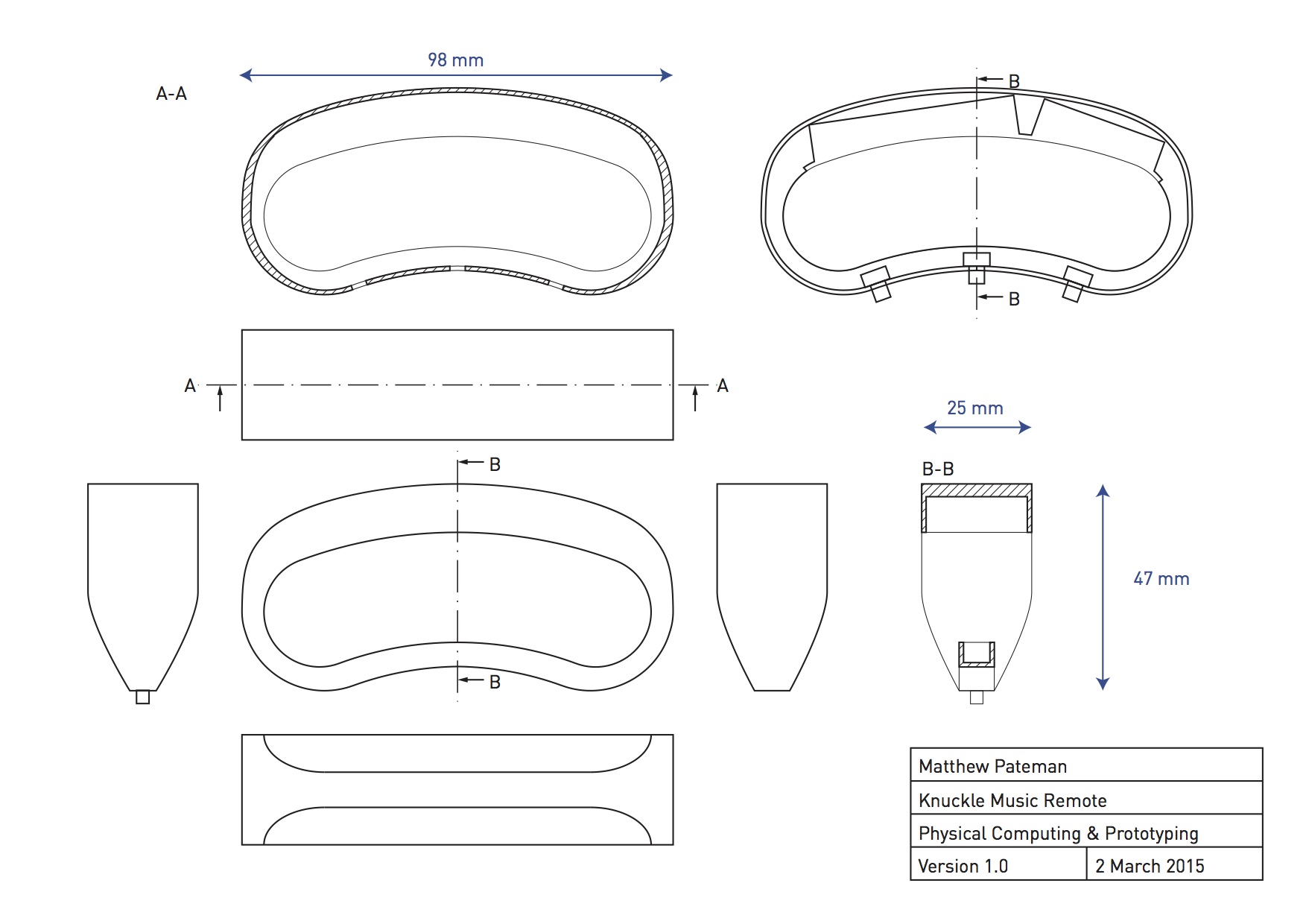

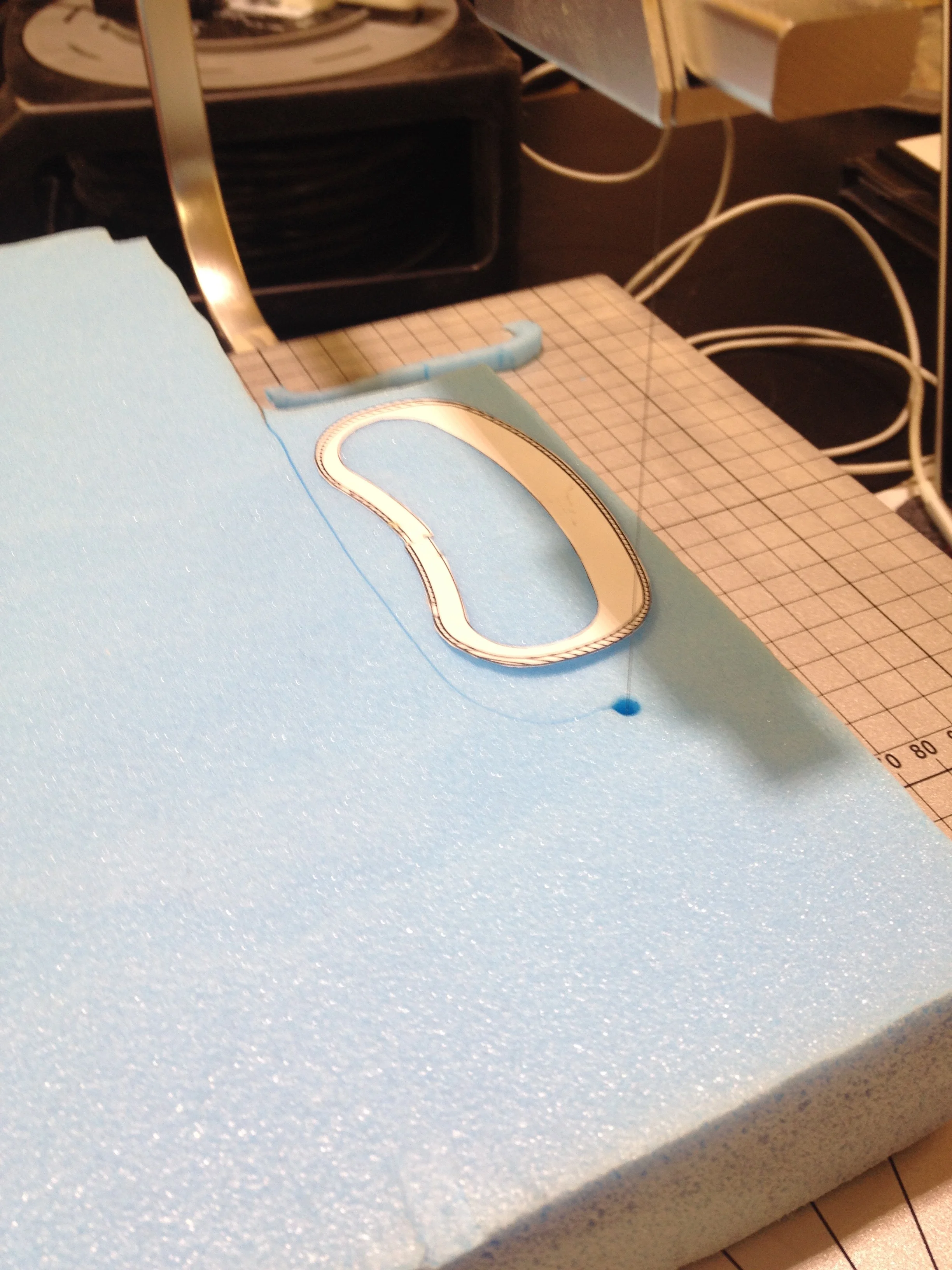
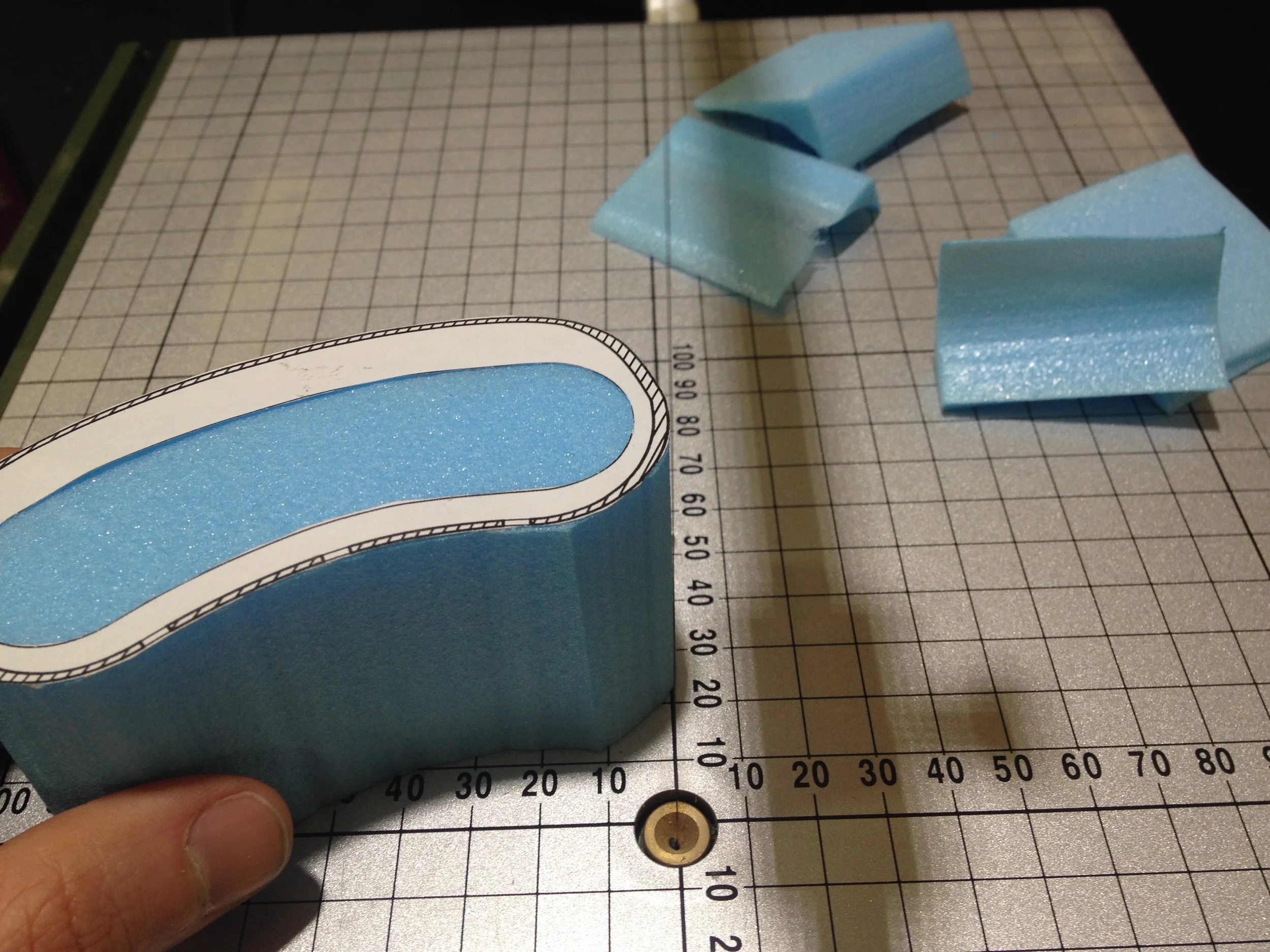

Prototyping process
Technical Implementation
The prototype utilised Arduino and RFDuino for Bluetooth functionality, transitioning from a wired setup to a compact wireless design for improved usability. RFDuino shields were initially employed to define the components required, although some, such as the LED/button shield, were replaced with individual components for greater flexibility.
Basic programming and functionality were first tested on an Arduino Uno. Once validated, the code was adapted for the RFDuino, replacing the wired connection with a Bluetooth serial connection. Through multiple iterations, a fully functional RFDuino prototype was developed alongside an iOS app, using sample code from GitHub to streamline the process.
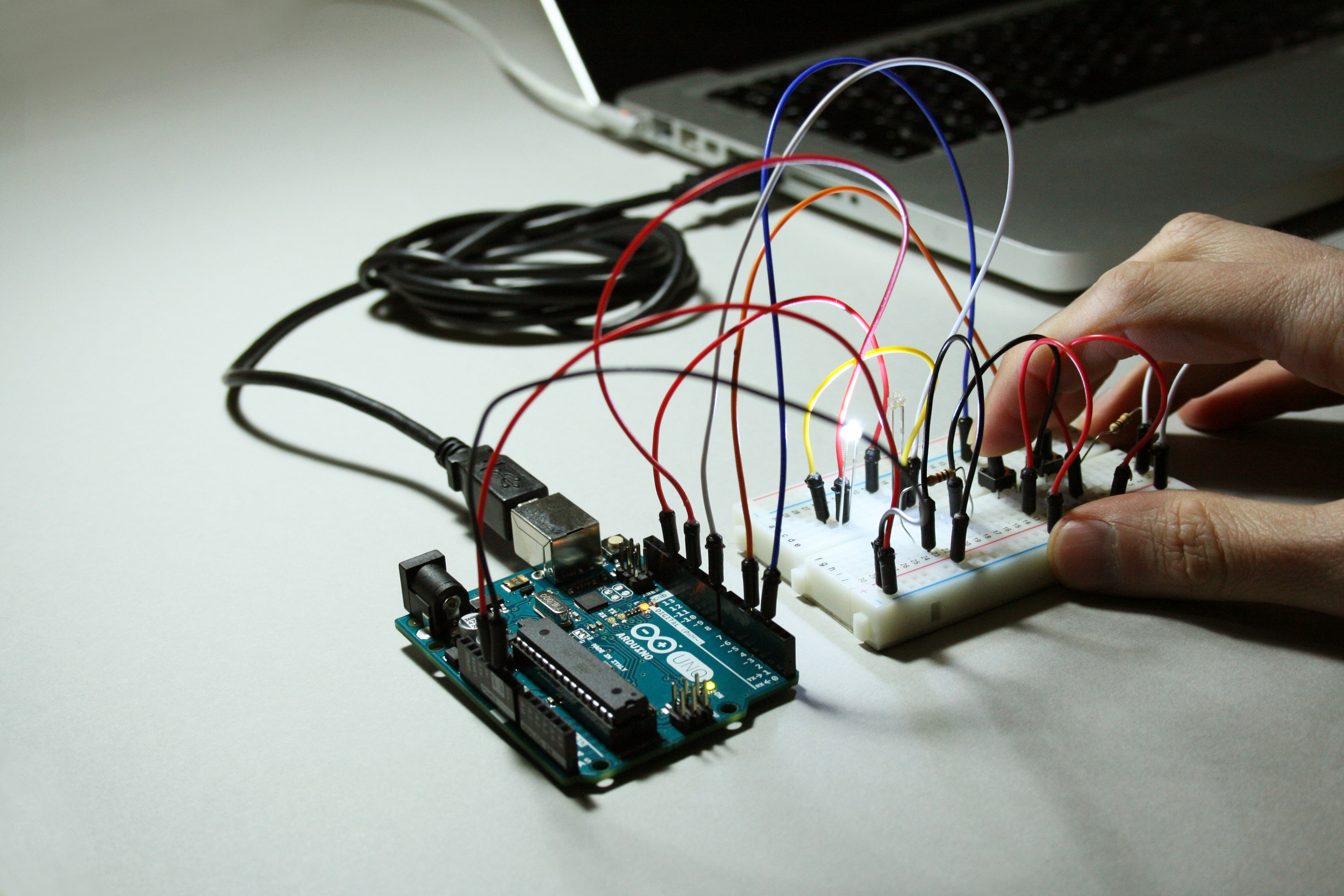



Model Fabrication
3D printing and CAD modelling in Rhino were essential in designing an ergonomic and wearable form. Various digital fabrication techniques were considered, but 3D printing offered the most flexibility, enabling the creation of organic shapes ideal for user comfort. While silicone rubber moulds were explored, they presented challenges when integrating electrical components and were ultimately deemed unsuitable for the early prototyping stages.
CAD modelling in Rhino
The engineering drawings were translated into 3D models in Rhino. Curves were refined and converted into a mesh, which was then exported as an STL file for printing. This process evolved through iterations, starting with paper models, progressing to foam prototypes, and culminating in the final 3D-printed design.
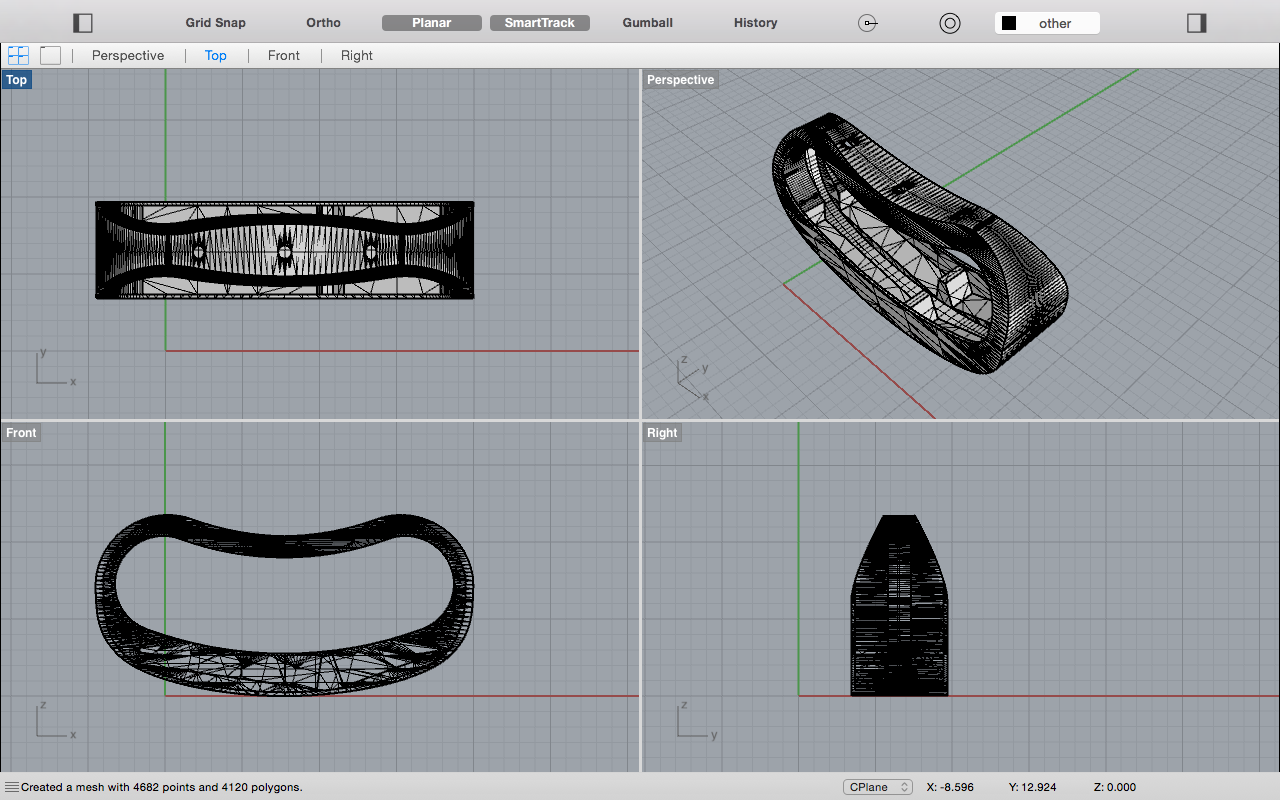
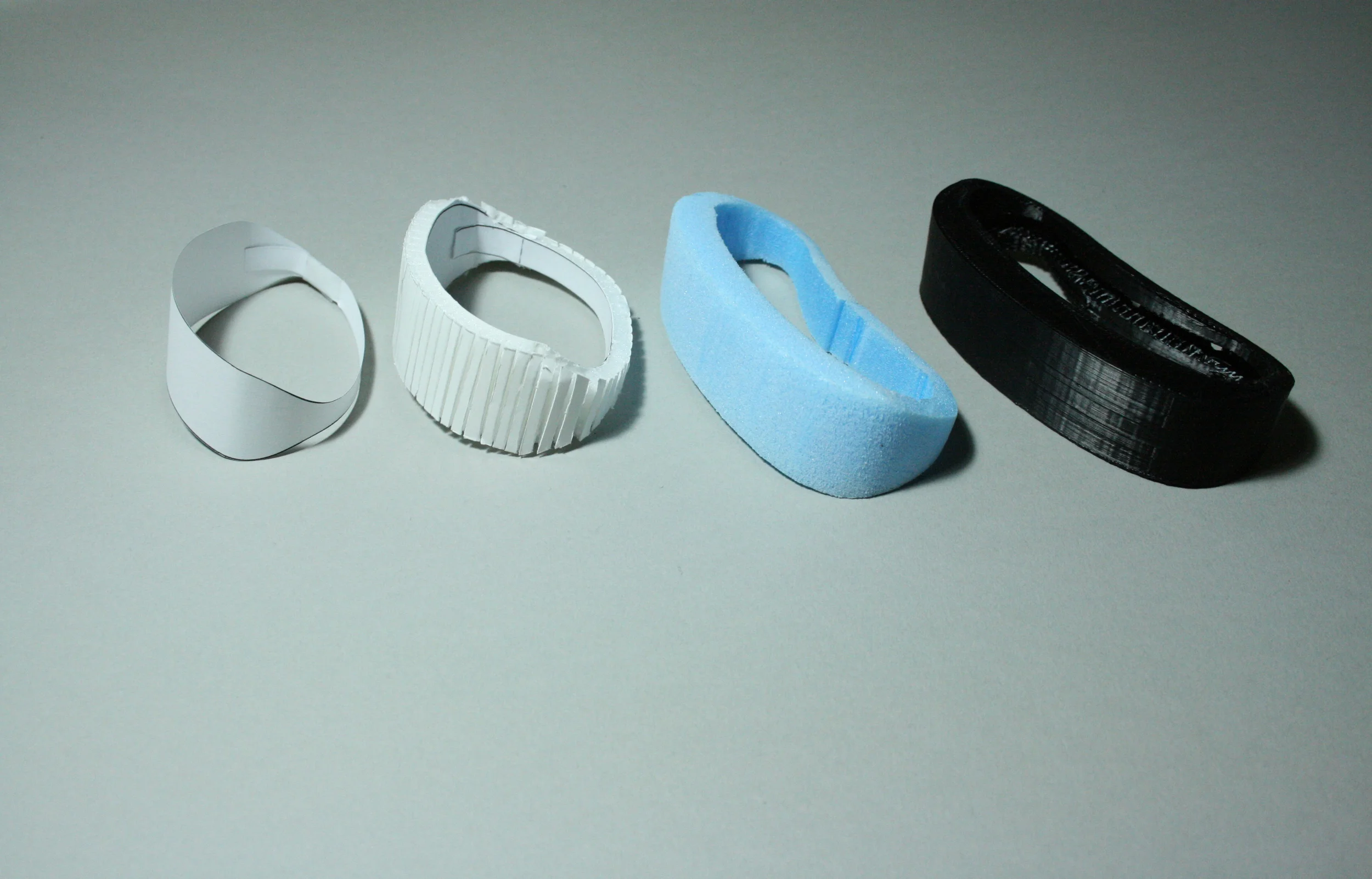
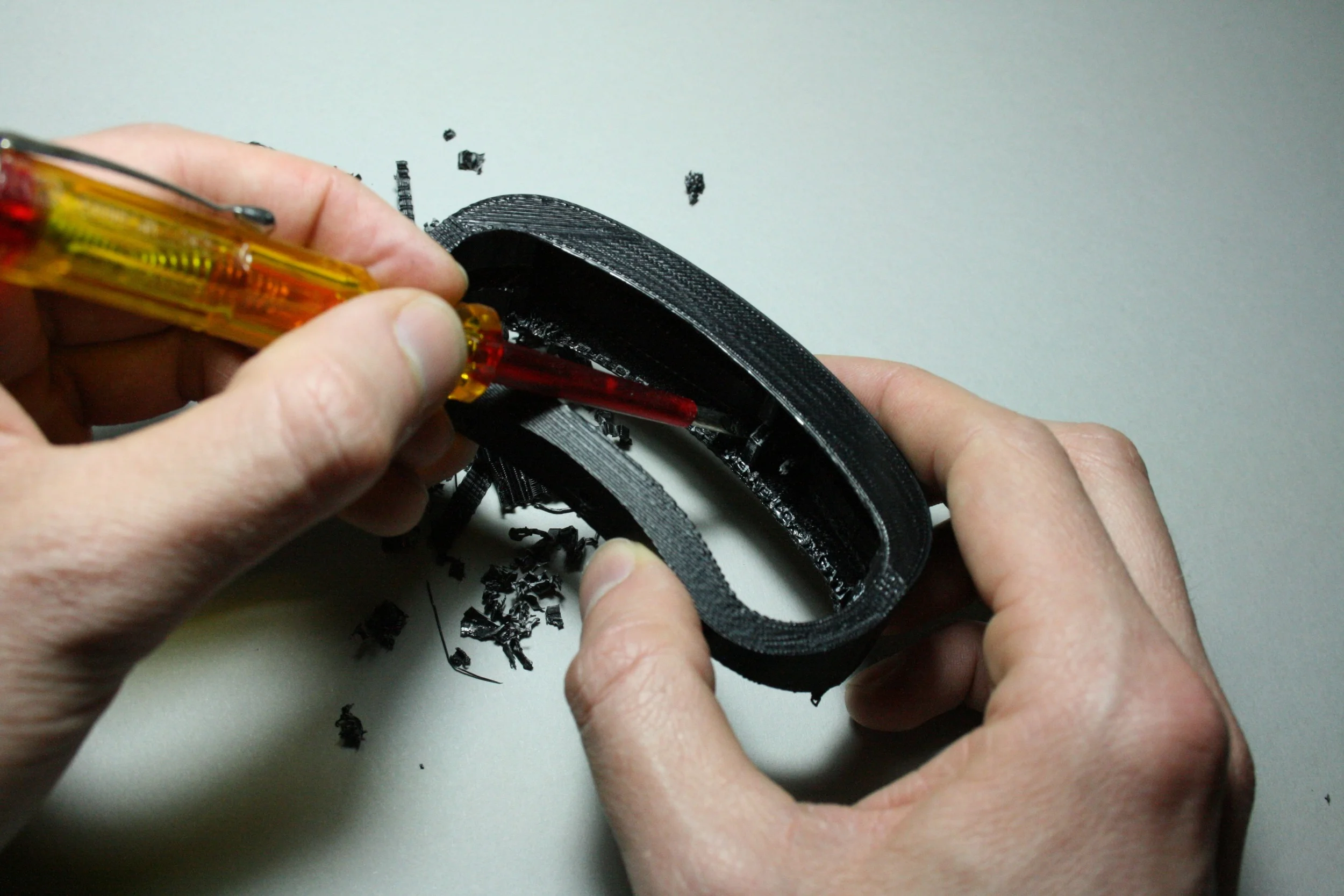
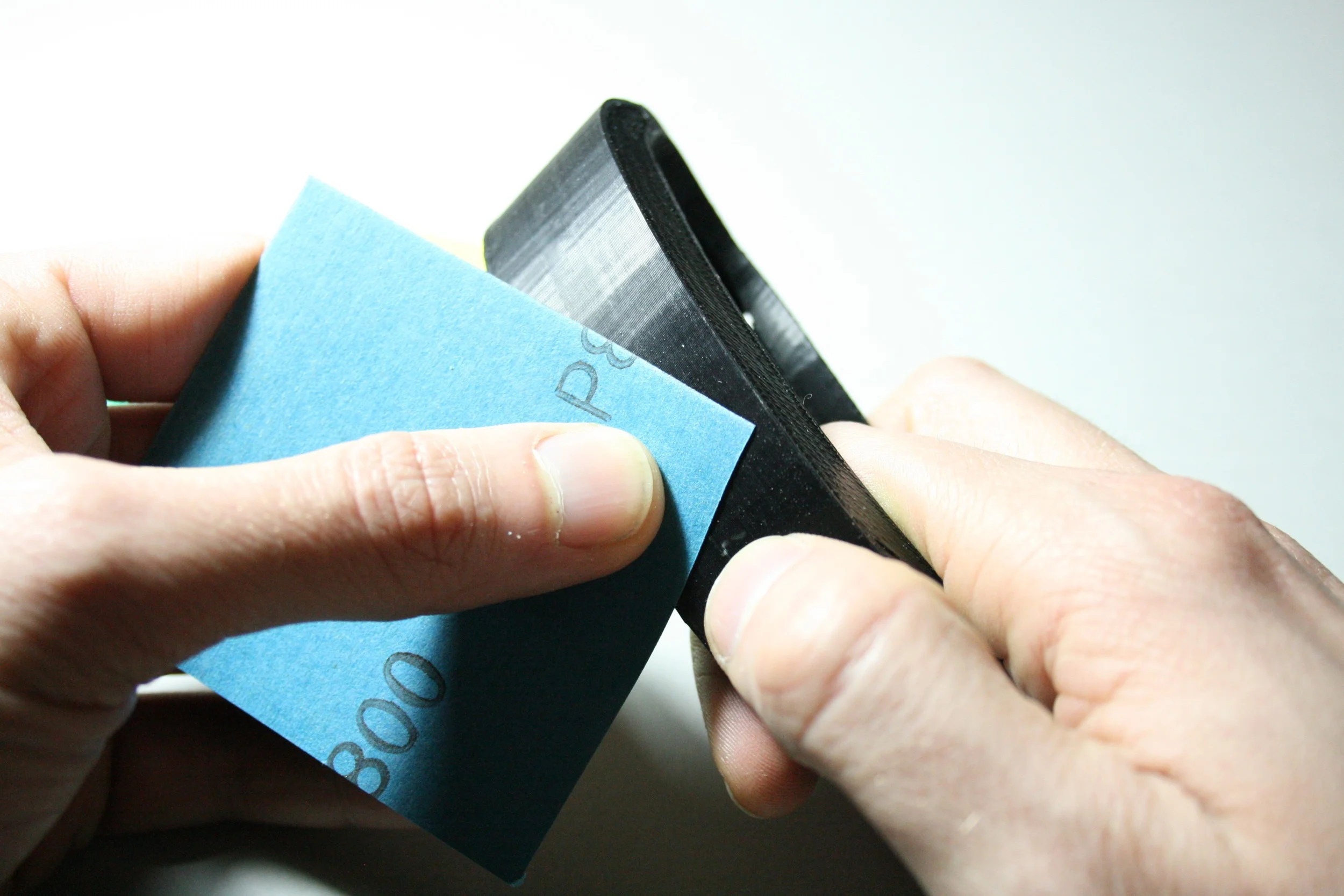
Merging model and prototype
Once the 3D-printed shell was completed, the functional Arduino prototype was integrated into the form, with buttons wired to their respective locations.
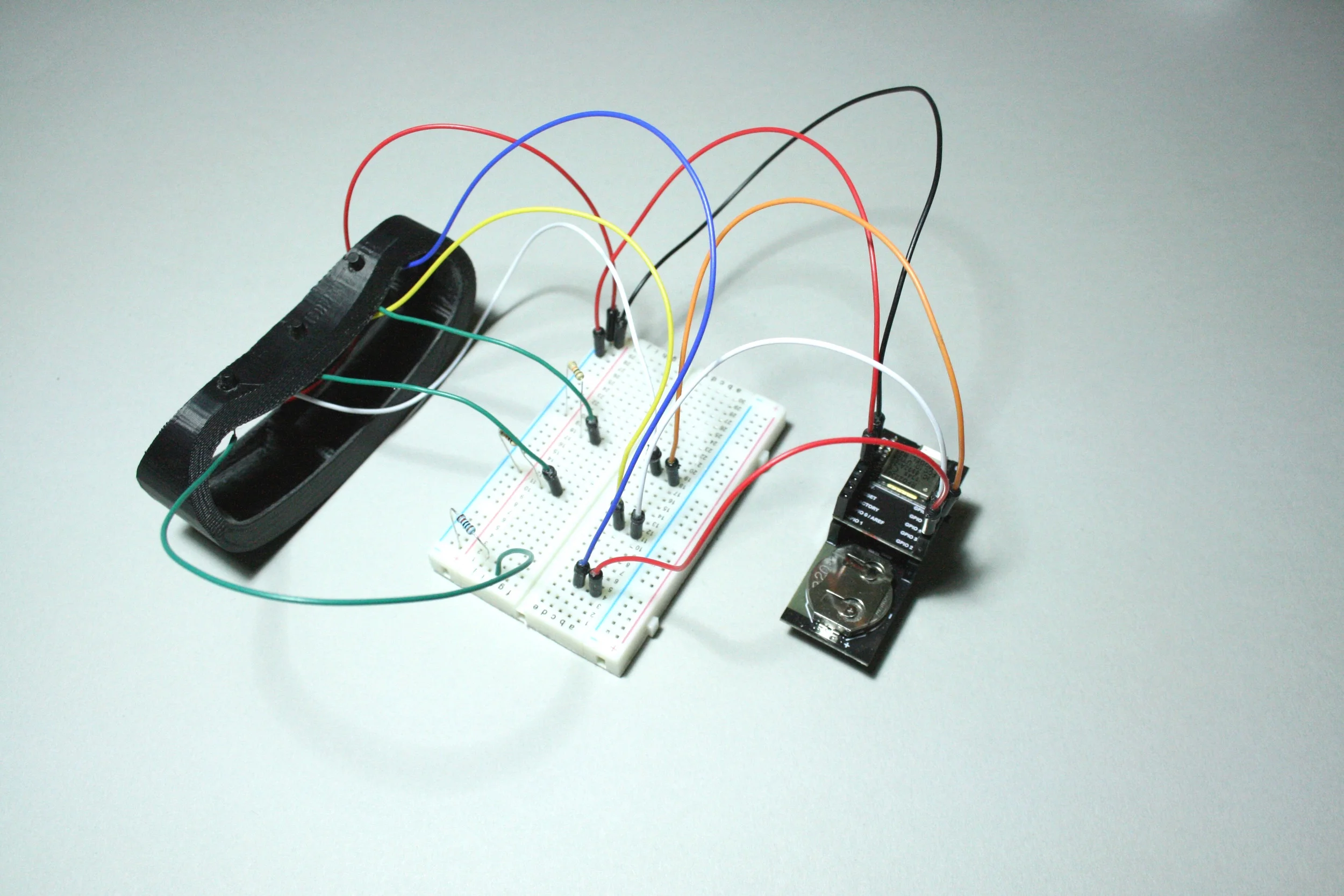
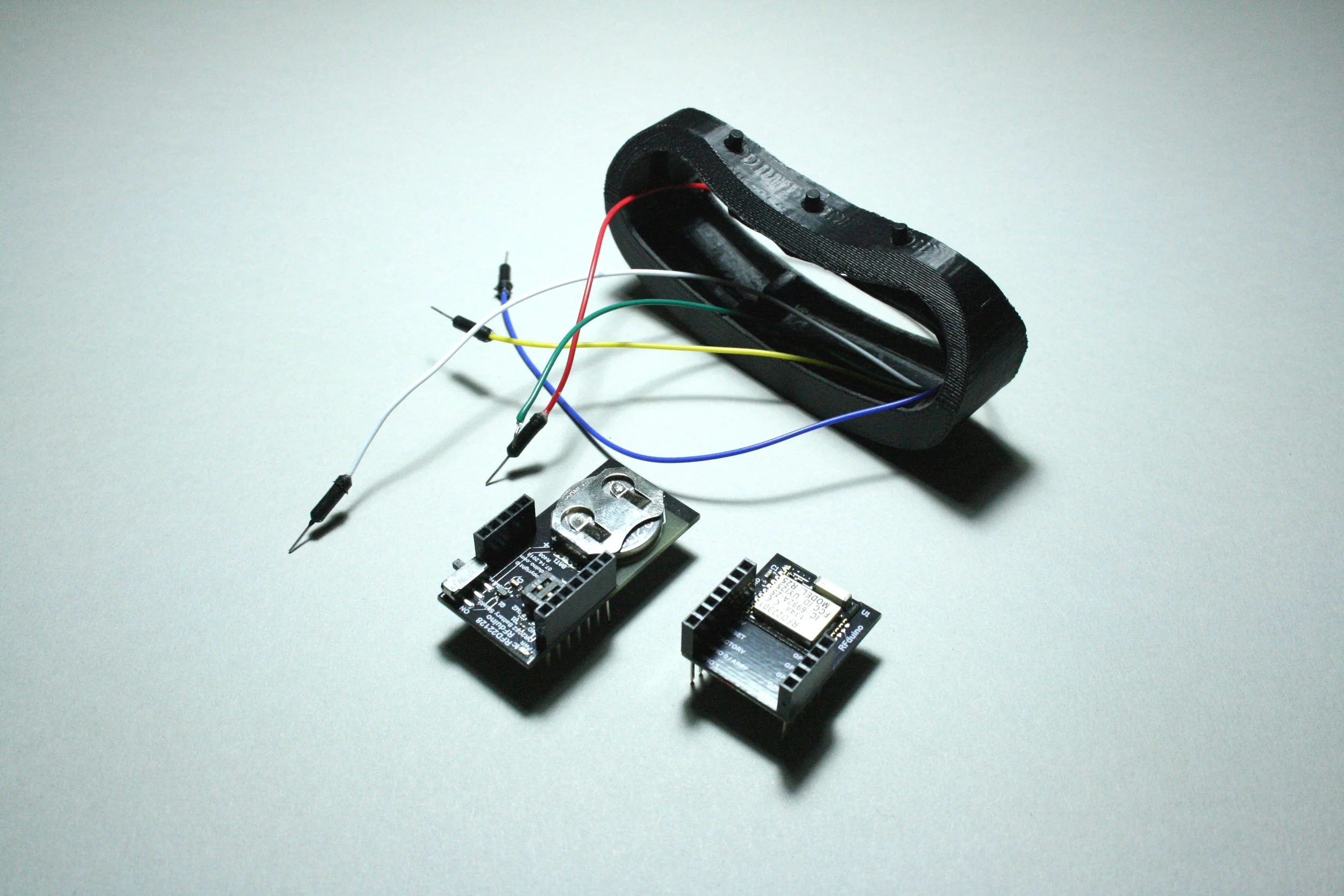

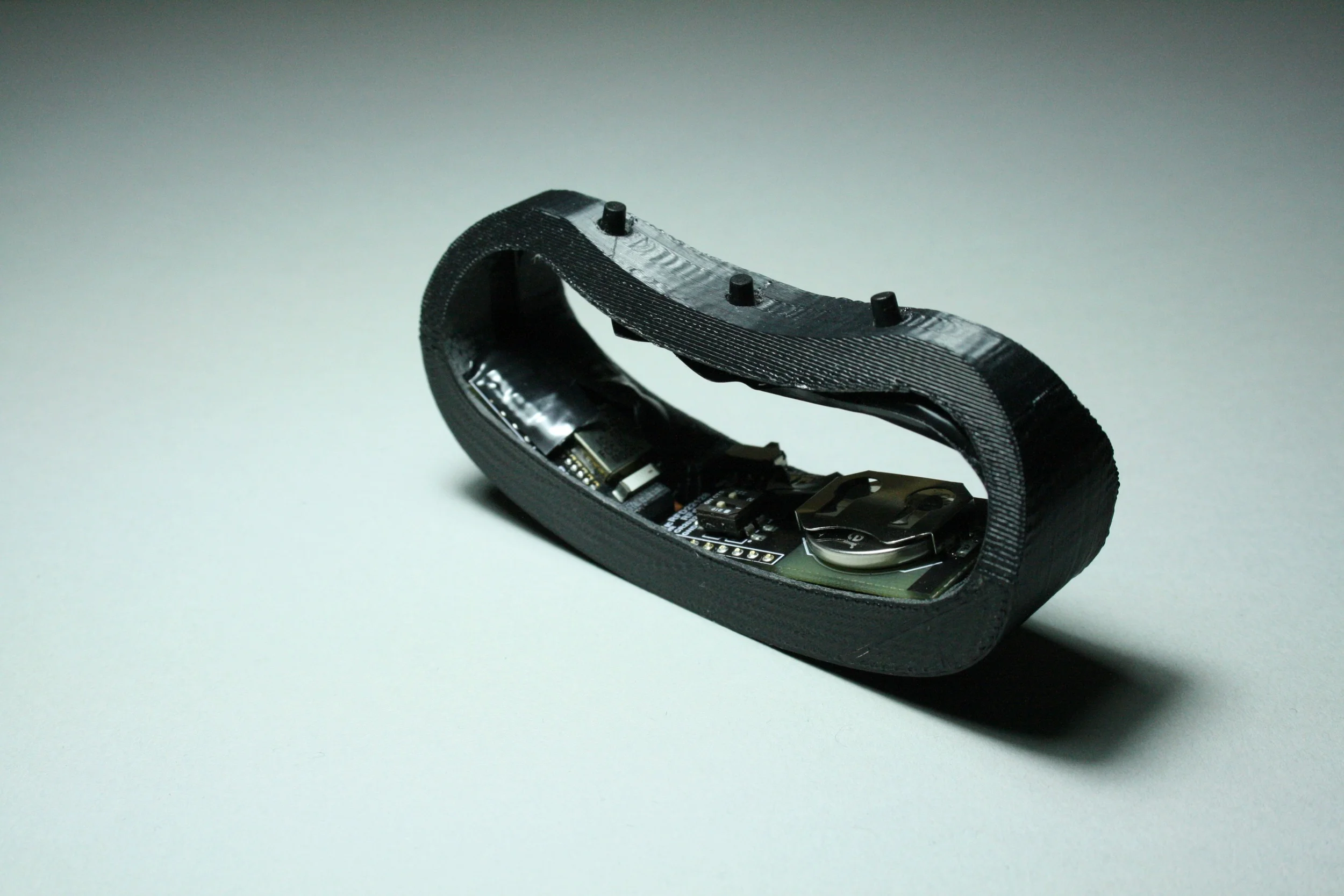
Functional Testing
The final prototype was tested during outdoor runs and gym workouts, allowing for real-world evaluation of usability, comfort, and functionality.
Final Prototype
The final wearable music remote features a compact, ergonomic design for one-handed use during physical activities. With Bluetooth-enabled Play/Pause, Fast Forward, and Rewind buttons, it integrates seamlessly with a custom iOS app using the Spotify API.


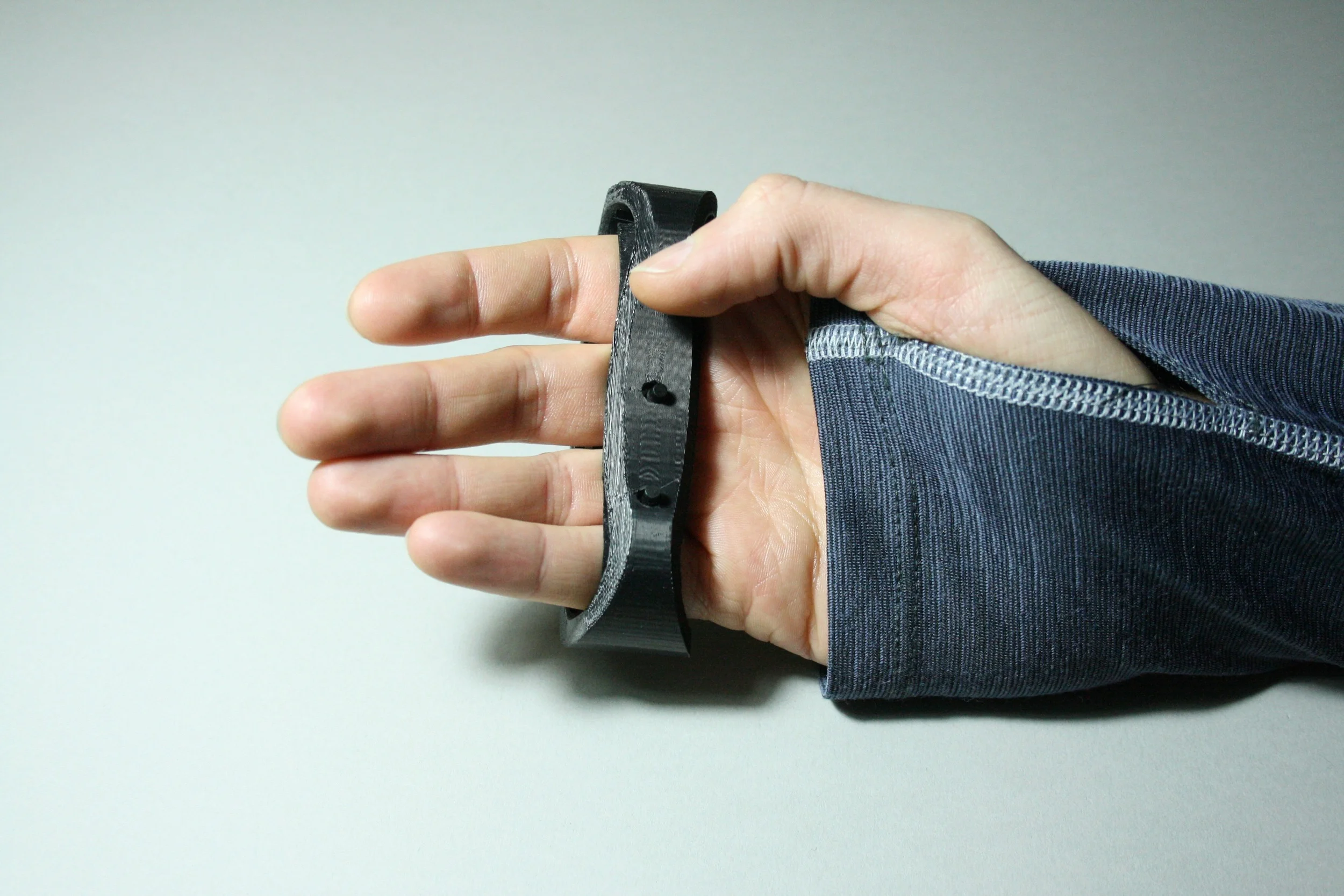

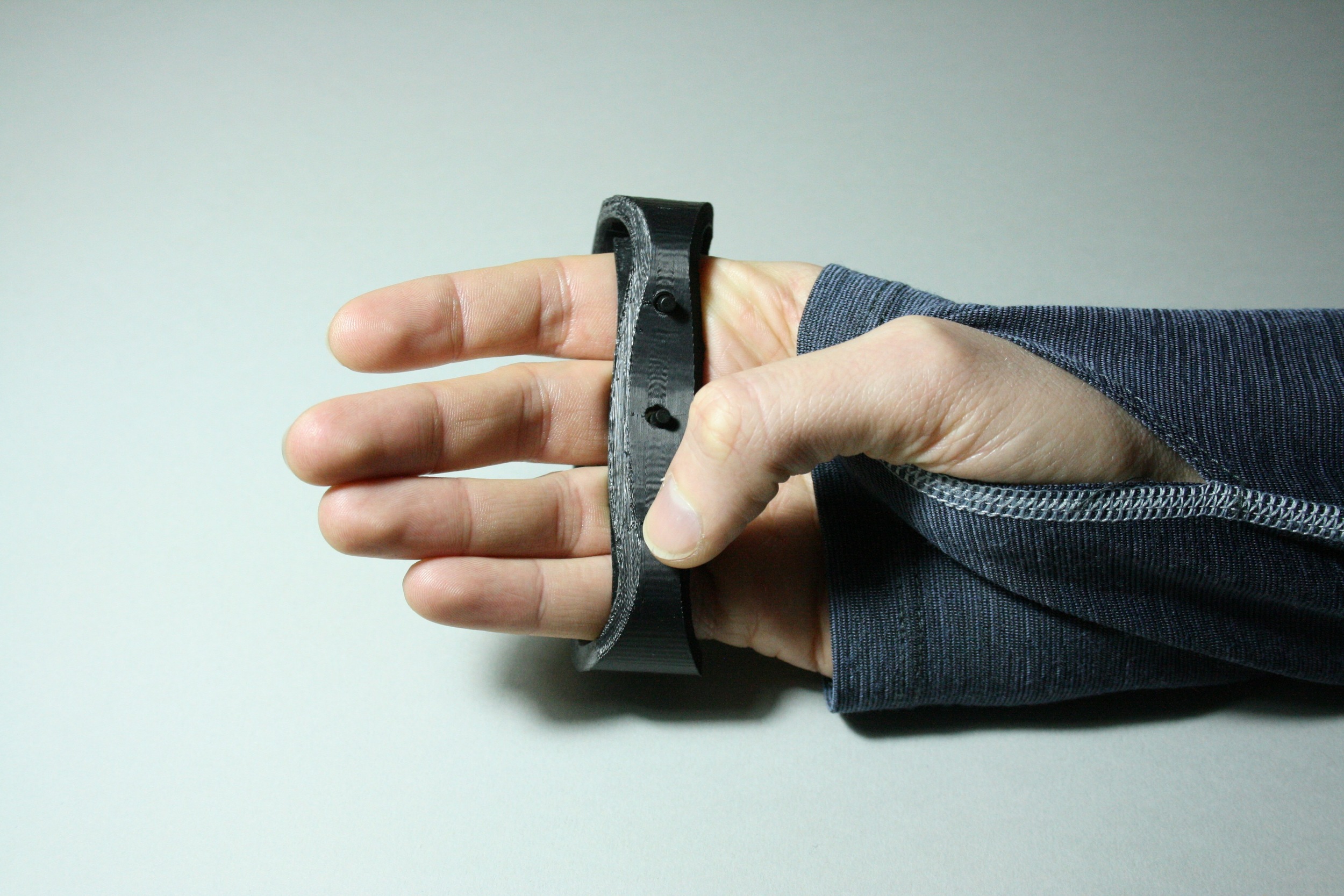


Further Development Opportunities
User testing confirmed the prototype’s usability, while identifying areas for further improvement. Future development will focus on improving comfort for extended wear, enhancing the durability of the 3D-printed shell, and refining integration with other products in the ecosystem. Additionally, upgrading the Bluetooth chip to support Bluetooth 2.1 and AVCP profiles will enhance compatibility with more music apps, eliminating the need for a bespoke app. Finally, exploring the use of a kinetic energy charger is recommended to provide a more sustainable power source.



